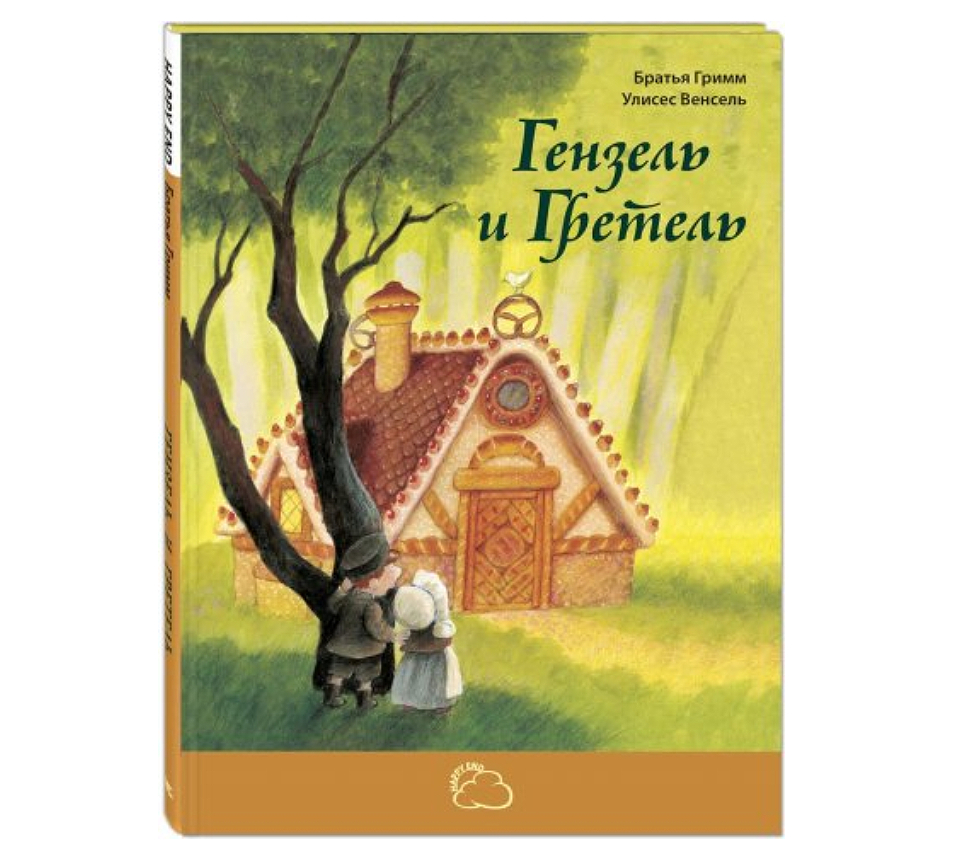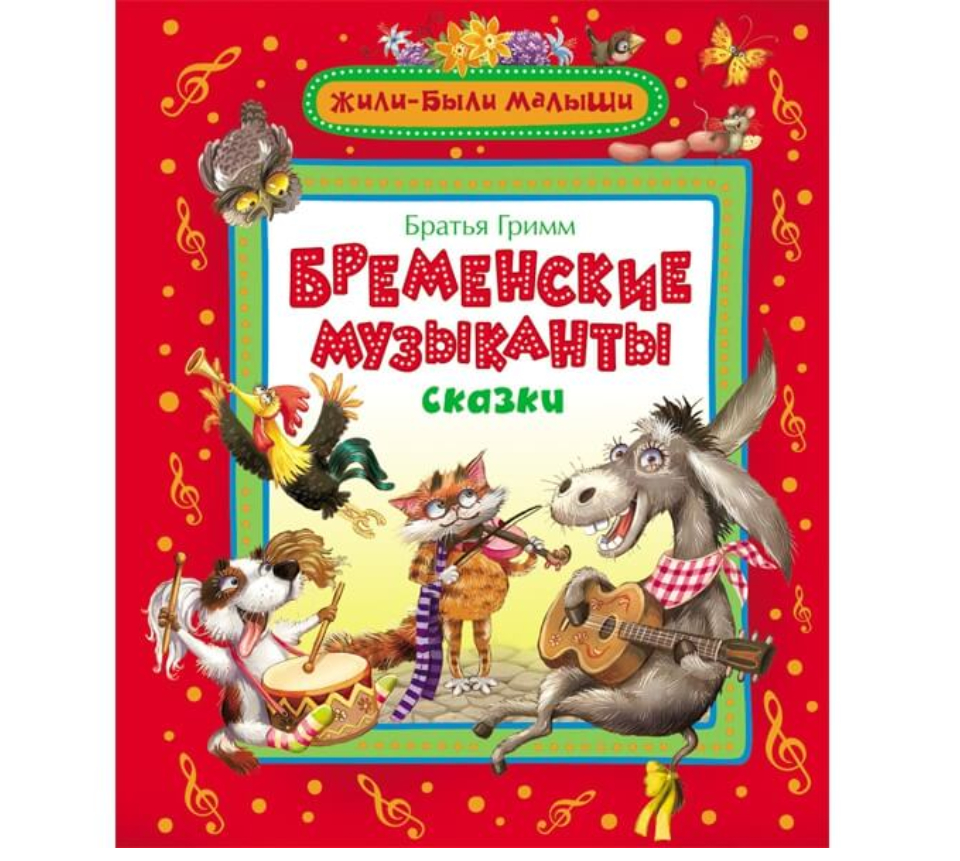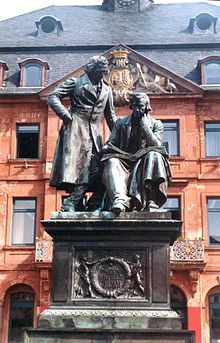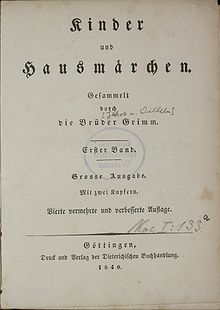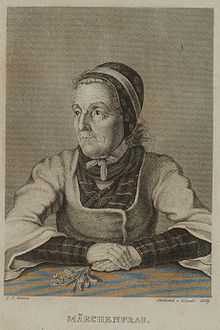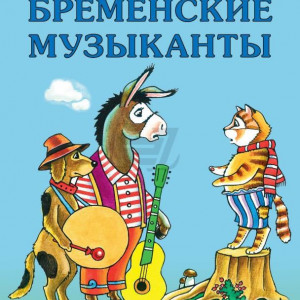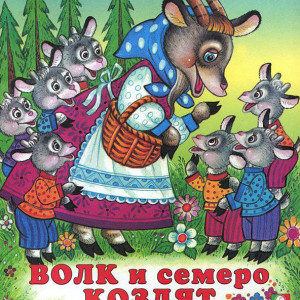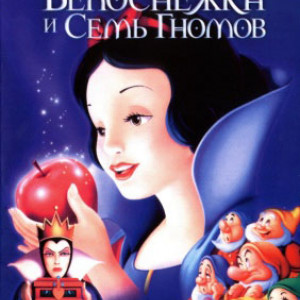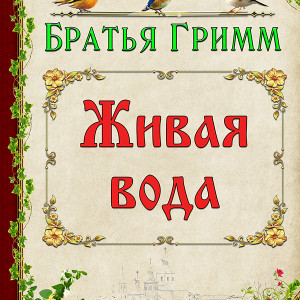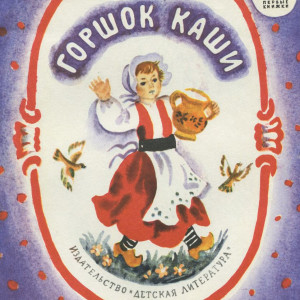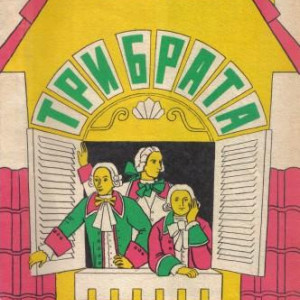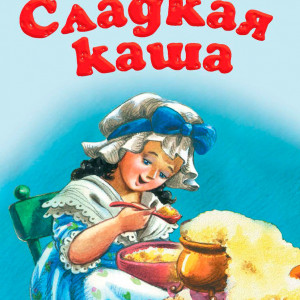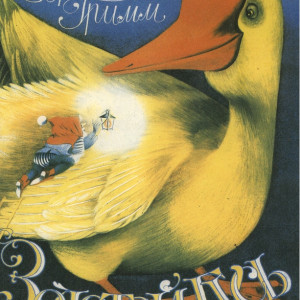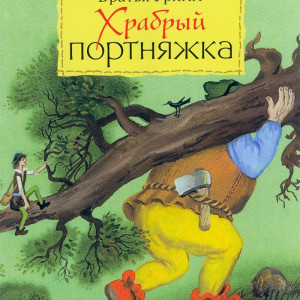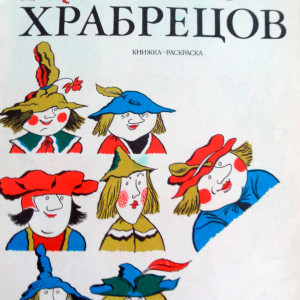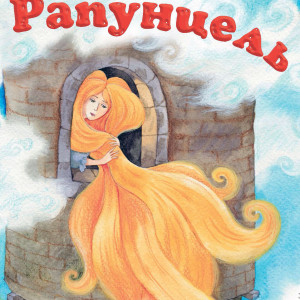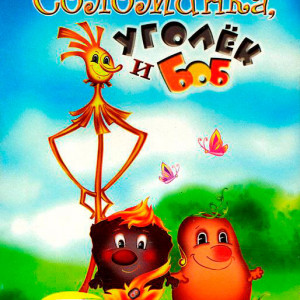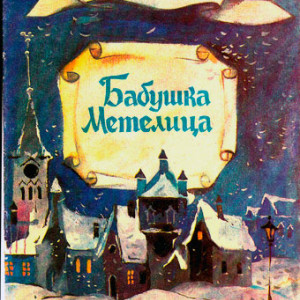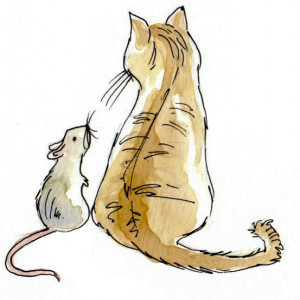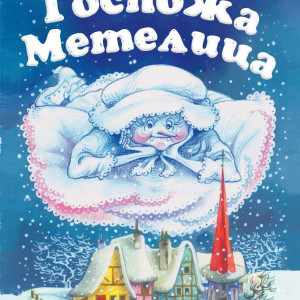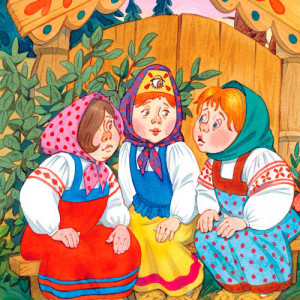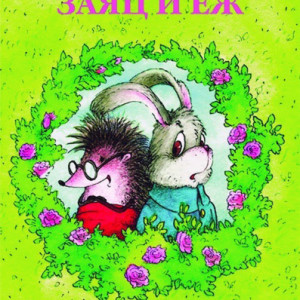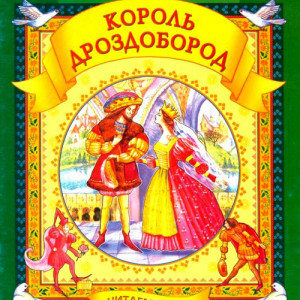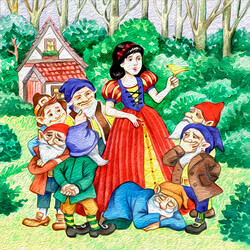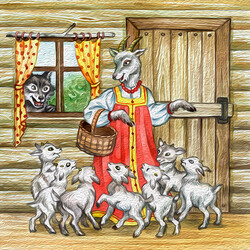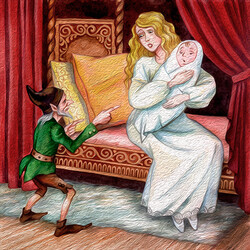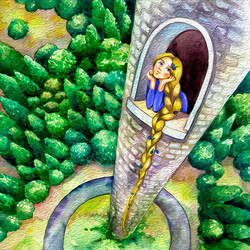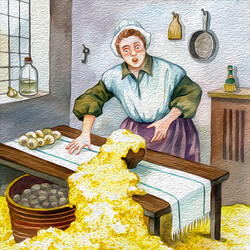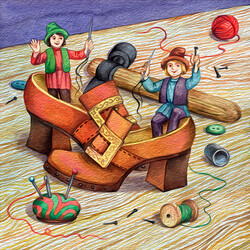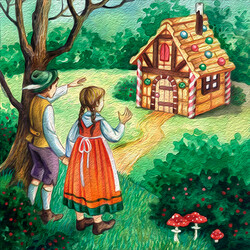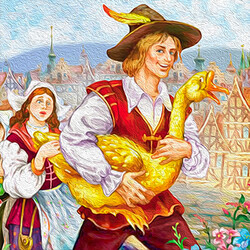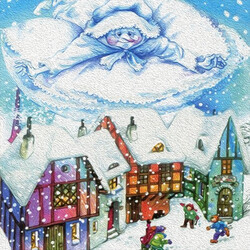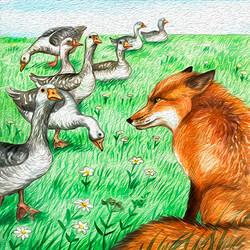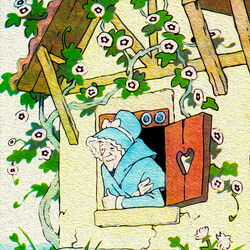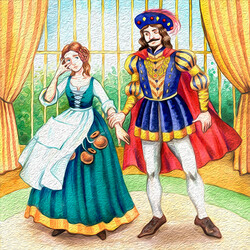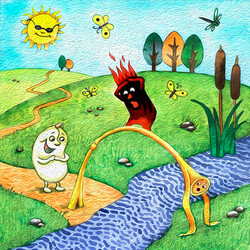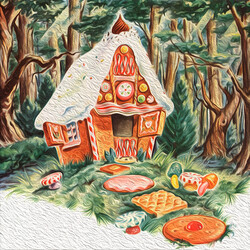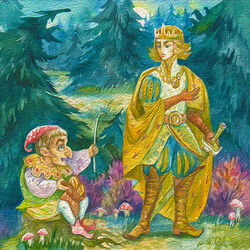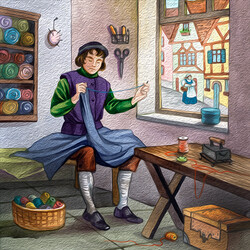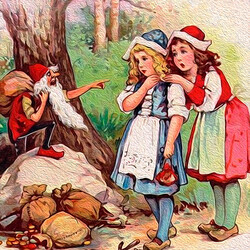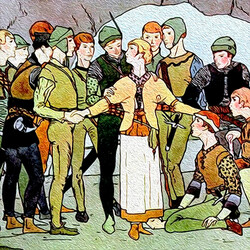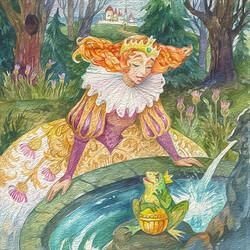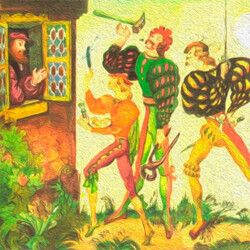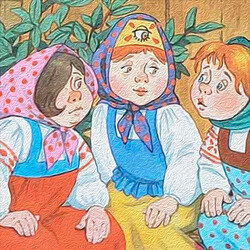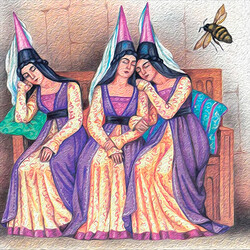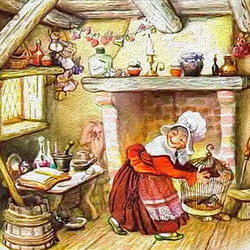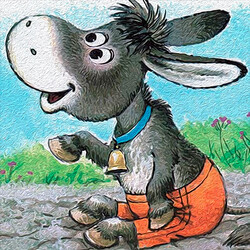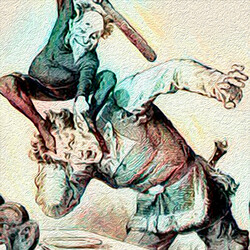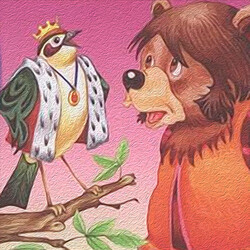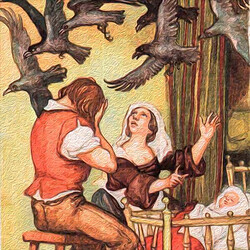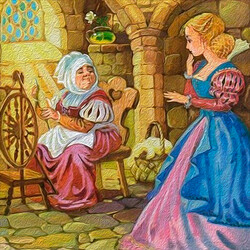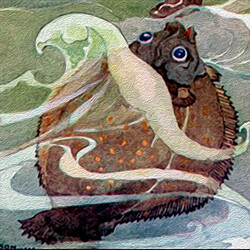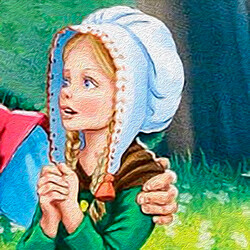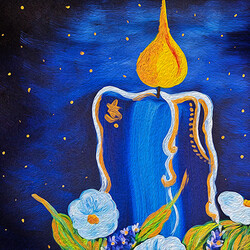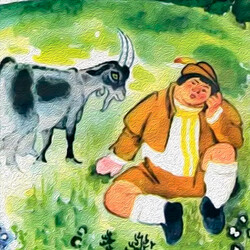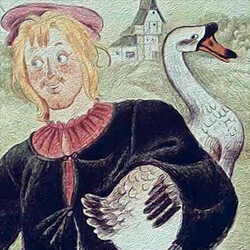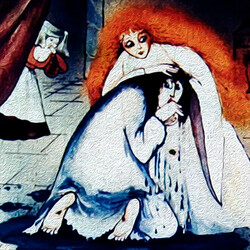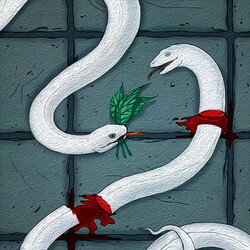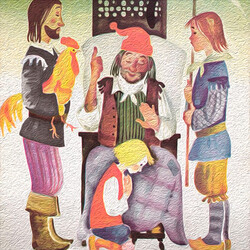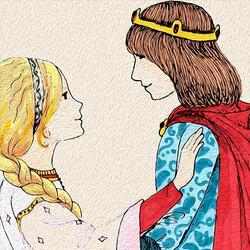Перейти к контенту
Братья Гримм: Сказки
Список сказок и рассказов:
Отзывы: 14
-
Полина
17.09.2020 в 13:12
У Братьев Гримм очень необычные сказки, при этом это не всегда в хорошем смысле слова. Для очень маленьких детей мне кажется они немного сложны. Хотелось бы более смешных сказок.
Ответить
-
Мне очень сильно понравился
Тест: маленькие человечкиОтветить
-
Как много
27.03.2021 в 16:07
Как много читать ?
Ответить
-
А мне всё это переписывать
Ответить
-
Лентяям много читать а мне вообще не много
Ответить
-
Очень крутые сказки !!! Мне очень понравилось ❤️❤️❤️
Ответить
-
Все сказки очень интересные /какая самая лучшая выбрать не могу
Ответить
-
довольно страшная версия Золушки , но сайт мне нравится
Ответить
-
Я буду переписывать всё, на другом сайте вообще 200!
Ответить
-
Аноним
17.01.2022 в 20:10
Мне нравятся эти сказки
Ответить
-
Сказки просто супер помогают сделать домашние задание
Ответить
-
Максим
21.05.2022 в 09:27
-
Мне нравятся все ?
Ответить
Братья Гримм: Сказки: читать онлайн популярные, лучшие народные сказки для детей, мальчиков и девочек, и их родителей о любви и Родине, природе, животных. Если вы не нашли желаемую сказку или тематику, рекомендуем воспользоваться поиском вверху сайта.
Братья Вильгельм (справа) и Якоб (слева) Гримм. Портрет Элизабет Йерихау (1885)
В 1812 году вышел первый сборник сказок выдающихся немецких лингвистов и фольклористов Якоба и Вильгельма Гримм. Прошло 210 лет, а дети продолжают зачитываться приключениями Золушки и Рапунцель, Белоснежки и Храброго портняжки, смеются над Умной Эльзой и Смышленным Гансом. Режиссеры из Европы и США охотно экранизируют сказки, как следуя оригиналу, так и создавая на их основе немыслимые сюжеты. Собственно, а что мы знаем о настоящих, а не созданных режиссерской фантазией Терри Гиллиама братьях Гримм? И как создавались их сказки, топ-20 из которых по версии КП мы назовем нашим читателям?
Кто такие братья Гримм: Якоб и Вильгельм
Вопреки фэнтезийной киноверсии голливудского режиссера Терри Гиллиама в биографии Якоба и Вильгельма Гримм нет ничего сказочного. Братья родились в семье адвоката Филиппа Вильгельма Гримм, в городе Ханау. Якоб был его вторым сыном (1785 – 1863), Вильгельм – третьим (1786 – 1859). У них было семеро сестер и братьев, трое из которых умерли в младенчестве.
Глава семьи рано ушел из жизни, его вдова и дети очень нуждались, но благодаря состоятельной тетушке – сестре матери – будущие великие сказочники смогли поступить Марбургский университет, мечтая, как и Гримм-старший, стать юристами. Они действительно прилежно изучали право, но в один прекрасный момент увлеклись филологией и все свободное время посвящали изучению немецкого фольклора. Путешествуя по землям Германии, они начали собирать материал для будущей книги сказок.
Благополучно окончив юридический факультет, Якоб и Вильгельм с головой ушли в германистику. Братья были очень дружны между собой, их сближали общие взгляды на мир, на науку, и комфортнее всего им работалось друг с другом.
Правда, в молодости их пути на некоторое время разошлись, когда Якоб поступил на службу библиотекарем к королю Вестфалии Жерому Бонапарту. Побывал в Париже, где помогал своему преподавателю, профессору Фридриху Карлу фон Савиньи собирать материалы для научной работы по правоведению, был делегатом Венского конгресса, ему светила дипломатическая карьера. Но Якоб остался верным науке.
Они с братом обосновались в городе Кассель, и в 1811 году издали свои первые работы по германскому и датскому фольклору. А через год вышел первый том «Детских и семейных сказок» в который вошли 86 произведений. Второй был опубликован в 1815 году и содержал еще 70 сказок. Якоб и Вильгельм проделали огромный труд, на протяжении восьми лет собирая сказки по всей Германии.
Братья Гримм стали также авторами двухтомника «Немецкие легенды», выпустили монументальный труд «Немецкая грамматика» и многие другие работы. При жизни они обрели славу отцов-основателей германских лингвистики и литературоведения. Главным достижением Вильгельма и Якоба Гримм считается первый этимологический «Немецкий словарь», над которым они начали трудиться в конце жизни – в 1830-х годах.
У этого издания удивительная судьба. Якоб успел написать разделы на буквы A, B, C, E, а Вильгельм на букву D, после их смерти работу продолжили ученые Геттингенского университета и Берлинской академии наук. А издан словарь был только через 120 лет, в 1960–м – за год до возведения Берлинской стены!
И все же в памяти людской братья Гримм остались, прежде всего, великими сказочниками, творениями которых до сих пор зачитываются дети всего мира, а театральные и кинорежиссеры создают шедевры на их основе.

У нас в Telegram постоянно проходят розыгрыши билетов на самые интересные события в Москве – концерты, спектакли, фестивали, шоу и многое другое. Подписывайтесь и получайте бесплатные пригласительные!
Лучшие сказки братьев Гримм: топ-20 по версии КП
1. «Золушка»
- Главные герои: Золушка, королевич
Сюжет: Эта сказка знакома всем преимущественно в пересказе великого французского поэта и литературного критика Шарля Перро, а российскому читателю – еще и по пьесе знаменитого советского драматурга Евгения Шварца.
Версия братьев Гримм несколько отличается от французской и советской. Что касается злой мачехи, противных сводных сестер и подкаблучника-отца Золушки, то здесь сюжет перекликается с классическим вариантом. И главная героиня так же страдает от непосильного труда и постоянных издевок навязанных ей родственниц, и так же мечтает попасть на бал во дворец.
Но у Золушки братьев Гримм, к сожалению, нет феи-крестной, не говоря уж о мальчике, который «не волшебник, а только учится». А на встречу с королевичем бедной девушке помогла собраться птичка, живущая на ореховом дереве, которое растет на могиле родной матери несчастной сиротки. И возмездие сестрам, обманом пытавшимся помешать Золушке стать невесткой короля, оказалось очень уж жестоким.
Цитата: «Моей женой будет только та, на чью ногу придется эта золотая туфелька».
Интересный факт: История Золушки вдохновляла не только драматургов и режиссеров. В гитлеровской Германии эта сказка служила пособием для теоретиков нацизма. Золушку они причислили к «чистой расе», мачеху – к иностранкам, а королевича отнесли к нацистским героям, у которого врожденное чутье на «чужих».
2. «Белоснежка и семь гномов»
- Главные герои: принцесса Белоснежка, злая мачеха, волшебное зеркало, семь гномов, королевич
Мозаика-синтез
Сюжет: Прекрасной дочери короля не повезло с самого рождения – ее мать-королева умерла, производя девочку на свет. Через год отец-король женился на другой, красивой и гордой женщине. И поначалу мачеха вроде бы неплохо справлялась со своими обязанностями, падчерицу не притесняла, хотя материнский инстинкт в ней так и не проснулся.
А самым любимым занятием новой королевы было смотреться в волшебное зеркало и задавать неизменный вопрос: «Кто всех красивей во всей стране?». И успокаиваться только тогда, когда оно отвечало: «Вы всех, королева, красивей в стране». Но однажды волшебный предмет посмел назвать первой красавицей не королеву, а ее падчерицу, которая подросла и стала «прекрасной, как ясный день».

Выставки Москвы – раздел, который поможет сориентироваться в огромном мире московских музеев и выставочных площадок. Обозреватели Афиши-КП рекомендуют лучшие выставки недели. Вы можете получить информацию о времени и месте проведения той или иной выставки, а также заранее приобрести билеты
И тут проявилась черная сущность мачехи. Она оказалась не просто ведьмой, а еще и людоедкой, отдав приказ придворному егерю убить юную соперницу в красоте, а заодно и принести себе на обед печень и сердце приговоренной Белоснежки. Впрочем, егерь оказался милосердным человеком, королевну отпустил восвояси, вместо нее пронзив стрелой оленя. Скитаясь по лесу, Белоснежка познакомилась с семерыми гномами-рудокопами, которые взяли девочку (по сюжету братьев Гримм, на тот момент королевне было всего семь лет) под свою опеку.
Но, как оказалось, испытания для Белоснежки только начались. Ясновидящее зеркало раскрыло тайну ее спасения злобной фурии-королеве, и та решила во что бы то ни стало довершить задуманное…
Цитата: «Белоснежка должна погибнуть, – крикнула она, – даже если бы это мне самой стоило жизни!».
Интересный факт: семеркаявляется одним из сакральным чисел в сказках многих народов мира. Например, оно есть в русских сказках «Семь Симеонов», «Волк и семеро козлят», в знаменитом произведении великого русского поэта Александра Сергеевича Пушкина «Сказка о мертвой царевне и семи богатырях», основанном на том же международном фольклорном сюжете, что и «Белоснежка». У братьев Гримм, помимо семерых гномов, можно также встретить семерых козлят, семерых воронов, семерых храбрецов.
3. «Красная Шапочка»
- Главные герои: девочка Красная Шапочка, ее бабушка, волк
Сюжет: Гриммовский вариант сказки, бытующей как в немецком, так и во французском, швейцарском и итальянском фольклоре. Именно он считается классическим. О том, как опасно маленьким девочкам ходить одним по лесу и разговаривать с незнакомцами. Бабушка очень любила свою внучку и подарила ей шапочку из красного бархата, которая так пришлась к лицу девочке, что ее саму прозвали Красной Шапочкой. Однажды мама попросила дочку отнести бабушке гостинцы.
Девочка взяла корзинку и, вместо того, чтобы пойти по прямой дорожке, решила сократить путь через лес. И первым, кого она встретила на пути, оказался волк. Жадный лесной хищник решил не сразу сожрать содержимое корзинки вместе с Красной Шапочкой, а задумал поживиться еще и бабушкой, хитро выведав у доверчивой девочки, где живет старушка. Так и сгинули бы бабушка с внучкой в брюхе у волка, если бы им на помощь не пришел местный охотник.
Цитата: «Бабушка, бабушка, отчего у тебя такие большие уши?».
Интересный факт: Сюжет этой сказки братьям Гримм поведала некая «старая Мария». Как оказалось, за этим псевдонимом скрывалась известная немецкая писательница Мария Хассенпфлуг, жительница города Кассель, в котором создавали свои бессмертные творения Якоб и Вильгельм.
5 книжных новинок для детей 2022: поросенок Джоуи и гепард, который не умел бегать

Представляем вашему вниманию пять книжных новинок, рассчитанных на детскую аудиторию. Все они вышли в конце 2021 – начале 2022 года. В нашем списке: «Фиксики. Приключения Баси и близнецов», «Театр невидимых детей» Марцина Щигельского, «Чукля» Александры Сазоновой, серия Гао Хунбо про поросенка Джоуи, а также «Эх! История о маленьком гепарде, который не умел бегать» Оли Васильковой и Лены Репетур.
4. «Шиповничек» (известна также как «Спящая красавица»)
- Главные герои: принцесса Шиповничек, 13 колдуний, принц
Сюжет: Злоключения королевского семейства начались с того, что на крестины новорожденной принцессы, прозванной Шиповничком за чудесный румянец на пухленьких щечках, не позвали одну из 13-и особо почитаемых колдуний. Причем обидели ее ни за что, ни про что – просто золотой сервиз, из которого полагалось вкушать угощение чародейкам, был рассчитан на 12 персон. А 13-й не хватило приборов.
Разгневанная колдунья все же пробралась на торжество и из мести прокляла маленькую принцессу, пообещав, что когда той исполнится 15 лет – она уколется о веретено и умрет. К счастью, одна из фей не успела еще пожелать новорожденной всех благ и смогла смягчить силу проклятья: дескать, девочка все равно уколется веретеном, но не умрет, а уснет беспробудным сном на сто лет.
И как ни старались король с королевой оградить свою дочку от беды, предсказание обиженной колдуньи сбылось в назначенный срок. Кто же поможет юной Шиповничек пробудиться от векового сна?
Цитата: «А что это за штучка такая, что так весело кружится?» – спросила королевна, взяла в руки веретено и также захотела прясть».
Интересный факт: Во французской версии сказки Спящая красавица просыпается не от поцелуя принца, а просто потому, что время пришло.
5. «Рапунцель»
- Главные герои: красавица Рапунцель, принц, ведьма
Сюжет: И вновь предупреждение на все времена: никогда не вступайте в сделку с нечистой силой! У одного доброго человека заболела жена, ожидающая ребенка. Женщина почему-то решила, что ей может помочь только травка под названием «рапунцель» (колокольчик), растущая в саду напротив их дома. Но на беду сад принадлежал ведьме. Заботливый муж тайком забрался в сад, похитил пучок травы, от которой жене и вправду стало легче. Однако болезнь не отступила окончательно, и похититель вновь отправился в ведьмин сад, где его и застигла хозяйка. Она предложила будущему отцу выбор: или его жена останется без лекарства и умрет, будучи беременной, или выздоровеет и родит, но первенца супруги должны будут отдать колдунье.
Герой выбрал второе. Через две недели выздоровевшая жена родила девочку, и в этот же день ведьма отобрала дитя у родителей, назвав ее, как ту проклятую травку – Рапунцель. Как только девочке исполнилось 12 лет, нечисть заперла ее в высокую башню в глубоком лесу, и Рапунцель была обречена страдать в одиночестве без всякой надежды на спасение.
Самые яркие фестивали Москвы

Насладиться хорошей музыкой, увидеть яркие постановки, шоу, уникальные экспонаты, попробовать изысканные угощения — все это можно сделать на различных фестивалях, которые каждый год проходят в Москве.
Так бы она, наверное, и состарилась в той башне, если бы не случайно завернувший в эти края принц и… чудные длинные золотистые косы самой Рапунцель.
Цитата: «А почему тебя тяжелее поднимать, чем принца?»
Интересный факт: Рапунцель стала одним из прототипов героини сказаний английского писателя Джона Рональда Руэла Толкина «Берен и Лутиэн» – эльфийки Лутиэн. Она тоже была заключена в высокую башню и своими длинными волосами могла укрываться, как плащом. Только косы у нее были не золотистые, а черные.
6. «Гензель и Гретель»
- Главные герои: мальчик Гензель, его сестра Гретель, ведьма
Энас-книга
Сюжет. О том, что много сладкого есть вредно. Чтобы не умереть от голода, муж и жена решили проблему кардинальным способом: избавились от лишних ртов – от детей Гензеля и Гретель. Справедливости ради заметим, что мать была им не родная. Ну, а отец права голоса в семье не имел. В общем, завел сына и дочку в лесную чащу и оставил там.
Гензель и Гретель бродили-бродили да и набрели на чудесный пряничный домик с окошками из прозрачной карамели. И только успели полакомиться сладостями, как к ним вышла добрая старушка-хозяйка и пригласила отдохнуть уставших детей на свежезастеленных кроватках. Только Гензелю и Гретель невдомек было, что бабуля лишь притворяется доброй, а на самом деле она злая ведьма, решившая их съесть.
Скрытый смысл детских сказок: Гензель и Гретель боролись с настоящими каннибалами, а Колобка никто не мог съесть из-за заговора

Истории, которые люди рассказывают детям, взялись не из пустоты. За ними спрятаны исторические трагедии и невероятные народные обычаи, у них есть сексуальная, мистическая, романтическая, драматическая — какая угодно, но совершенно взрослая подоплека.
К счастью, братик с сестренкой оказались смышлеными, и так же, как их сверстник Терешечка из русской народной сказки перехитрил Бабу-Ягу, обвели коварную старуху вокруг пальца. Правда, куда Гензелю с Гретель деваться теперь, если дома им никто не будет рад?
Цитата: «Гензель, протяни-ка мне палец, дай пощупаю, скоро ли ты откормишься?»
Интересный факт: Сказку о Гензеле и Гретель Вильгельм Гримм услышал от своей будущей супруги Доротеи Вильд.
7. «Мальчик-с-пальчик»
- Главный герой: Мальчик-с-пальчик
Сюжет: Бездетные супруги так хотели стать родителями, что готовы были даже на то, чтобы их ребеночек был ростом с мизинец. Как говорится, хотели – получите. У них родился хорошенький здоровый мальчик, но крохотный, не выше пальца. Соответственно, и прозвище он получил Мальчик-с-пальчик.
Но, несмотря на особенности развития, герой рос умненьким и старательным. Любил помогать маме с папой. Однажды даже лошадью управлял, забравшись к ней в ухо. А как-то помог отцу заработать, только при этом родители чуть было не потеряли его навсегда. Мальчик-с-пальчик пережил немало приключений: побывал в мышиной норке, переночевал в раковине улитки, избежал гибели в желудке коровы и волчьем брюхе и помог поймать воров.
Цитата: «А вот посадите меня на поля вашей шляпы: там я могу и расхаживать, и местность кругом озирать, и не упаду оттуда».
Интересный факт: Мальчик-с-пальчик является прототипом знаменитой «Дюймовочки» датского сказочника Ханса Кристиана Андерсена.
8. «Госпожа Метелица»
- Главные герои: трудолюбивая девушка, ленивая девушка, Госпожа Метелица
Сюжет: Русские Морозко, Настенька и Марфушка на немецкий лад. У деревенской вдовы были дочь и падчерица. Первая – страшненькая и нерадивая, вторая – пригожая и прилежная. Как-то падчерица пряла пряжу у колодца, укололась о веретено, но в отличие от Спящей красавицы, не заснула на сто лет, только сильно палец поранила и орудие труда в воду уронила.
Зловредная мачеха заставила девушку нырнуть за веретеном в колодец, надеясь, что падчерица там навеки и останется. Но та не утонула, а оказалась в параллельном мире – во владениях Госпожи Метелицы. Старуха, кстати, оказалась добрее нашего Морозко и не стала мучить девушку издевательским вопросом «Тепло ли тебе девица?» при температуре минус 30, пожалела ее, пригласила пожить у себя в доме и поработать за еду.
Книги про сон ребенка: как помочь малышу наконец заснуть

В книгах издательства «Комсомольская правда» вы найдете самые разные ответы на все ваши вопросы про детский сон. Авторы книг для родителей, которые выходят в издательстве «Комсомольская правда», пишут прекрасные специалисты — врачи-педиатры, психологи.
А когда девица соскучилась по своему миру, Госпожа Метелица не просто отпустила старательную помощницу, но и наградила, осыпав золотом. И веретенце утонувшее отдала. Конечно, мачеха с родной дочерью позавидовали вернувшейся с того света невредимой и разбогатевшей падчерице и решили снова провернуть такой же трюк…
Цитата: «Ты мне только постель стели получше да перину и подушки взбивай посильнее, чтобы перья во все стороны летели. Когда от моей перины перья летят, на земле снег идет».
Интересный факт: Немцы до сих пор спорят, где же все-таки живет Госпожа Метелица? Кто-то уверен, что на горе Хохер Мейсснер в земле Гессен, кто-то – что на горе Хёрзельберг в Тюрингии.
9. «Король Дроздобород»
- Главные герои: принцесса, король Дроздобород
Сюжет: Про капризную, переборчивую и злую на язык принцессу, которую взялся перевоспитать добрый король с небольшим изъяном во внешности. Как-то королю, к дочке которого сватались знатные люди из ближних и дальних стран, надоело, что единственное чадо не просто отказывает всем, а норовит оскорбить каждого потенциального жениха. Больше всего досталось добряку-королю, у которого подбородок был неидеальной формы, «словно клюв у дрозда», по выражению принцессы. Беднягу с тех пор иначе, чем король Дроздобород, никто не называл.
Тогда отец-король поклялся, что выдаст дочку замуж за первого встречного. Спустя два дня у ворот замка появился нищий певец, которому и привалило счастье стать мужем принцессы. Нищий увел молодую жену в чужие края, где ей пришлось стать сначала пряхой, потом продавщицей глиняных горшков и посудомойкой на королевской кухне, питаясь объедками со стола монарха. Как оказалось, того самого короля Дроздоборода. Но в итоге все кончилось хорошо, тем более, что и нищий певец, и гусар, разбивший глиняные горшки принцессы… Ну, вы сами догадались.
Цитата: «А где же слуги?» – спросила королевна. «Слуги? Это зачем? – отвечал певец. – Ты сама должна все для себя делать. Разведи-ка сейчас же огонь да свари мне чего-нибудь поесть, я очень устал».
Интересный факт: В 1969 году советские режиссеры Валентина и Зинаида Брумберг сняли мультфильм «Капризная принцесса» по мотивам сказки «Король Дроздобород». Самым колоритным персонажем картины стал шут Карлуша, которого не было в оригинале, с его привязчивой песенкой «Тирлим-боб-бом, тирлим-бом-бом, клянусь своим дурацким лбом». Его роль озвучил знаменитый Андрей Миронов.
10. «Бременские музыканты»
- Главные герои: осел, собака, кошка, петух
Сюжет: Жили-были домашние животные, которые на старости лет стали не нужны своим хозяевам. Осла пытались уморить голодом, собаку – прибить, кошку – утопить, а из петуха – сварить суп. Тогда животные, чтобы избежать преждевременной смерти, решили сбежать в город Бремен и объединиться в творческий коллектив под названием «Бременские музыканты». Но прежде, чем добраться до Бремена, им пришлось заночевать в лесу, где они наткнулись на разбойничий притон…
Цитата: «Кто же станет радоваться, если его схватят за глотку?»
Интересный факт: в Советском Союзе сказка стала особенно популярна после выхода мульфильма-мюзикла «Бременские музыканты» (1969 год, режиссер Инесса Ковалевская), одним из авторов сценария выступил актер Василий Ливанов – главный Шерлок Холмс всех времен и народов. Все мужские партии в мультфильме исполнил актер Олег Анофриев.
Спустя четыре года вышло продолжение мультфильма «По следам бременских музыкантов». В нем за главных героев спел великий Муслим Магомаев.
11. «Беляночка и Розочка»
- Главные герои: сестры Беляночка и Розочка, злой гном, заколдованный принц
Сюжет: Существуют люди (и не только), в отношении которых справедлива поговорка «не делай добра – не получишь зла». Так и добрые сестры-красавицы Беляночка и Розочка дважды помогли гному, попавшему в переплет, и вместо благодарности получили от него лишь оскорбления.
За девушек вступился медведь, которого они задолго до этого умудрились приручить. Оказывается, зверь был когда-то человеком – обидевший девушек злой гном превратил его в хищника…
Цитата: «Неотесанный народ! Отрезать кусок такой прекрасной бороды! Ах, чтоб вас!..»
Интересный факт: Сюжет «Беляночки и Розочки» по-своему пересказала немецкая метал-группа Rammstein в известной песне «Rosenrot» (Розочка).
12. «Румпельштильцхен»
- Главные герои: Дочь мельника, карлик Румпельштильцхен
Сюжет: О том, как хвастливый отец не удержал свое буйное воображение, а расплачиваться за это пришлось его дочери. Некий немецкий мельник как-то повстречался с королем, и то ли с испугу, то ли от избытка излишней самоуверенности возьми да соври главе государства: мол, его очаровательная дочка умеет создавать из обычной соломы золото высшей пробы. Монарх принял его слова за чистую монету и усадил девушку в каморку за прялку: мол, чтоб к утру воз соломы превратился в воз золота, а не то голова с плеч!
Девушка расплакалась в ожидании неминуемой гибели, но вдруг, откуда ни возьмись, явился карлик и предложил в обмен на ленточку из ее косы выполнить задание короля.
Лучшие спектакли в Москве

Классика и современная драма, спектакли музыкальные и кукольные, театральные представления для детей – как сориентироваться во всем этом многообразии? Мы выбрали для вас самые интересные постановки
Наутро каморка была битком заполнена нитями из чистого золота, но жадноватому королю показалось мало, и девушку вновь усадили за пряжу. Во вторую ночь услужливый карлик за превращение соломы в золото потребовал от дочери мельника колечко, а в третью – ни много, ни мало, отдать ему первенца, который родится у нее после того, как она станет королевой…
Цитата: «Королева перепугалась и предлагала ему все сокровища королевства, если только он оставит ей ребенка; но человечек отвечал: «Нет, мне живое существо милее всех сокровищ в мире».
Интересный факт: В 1968 году швейцарский астроном Пауль Вильд открыл новый астероид и назвал его в честь Румпельштильцхена.
13. «Король-лягушонок или Железный Генрих»
- Главные герои: принцесса, говорящий лягушонок
Humanus
Сюжет: О том, что нужно всегда выполнять свои обещания, и будет вам счастье. Мужской вариант русской народной сказки «Царевна-лягушка». В ней вместо трех братьев-царевичей действует одна принцесса. При этом отец не заставлял ее срочно искать жениха и упражняться в стрельбе из лука.
На лягушку мужского пола принцесса наткнулась случайно – уронила в колодец золотой мячик, а мерзкое земноводное пообещало вернуть ей игрушку. И, как водится в сказках, потребовало неравноценный обмен: девушка должна за это полюбить его, кормить, холить, лелеять и позволить жить рядом с собой.
В войну работала медсестрой: почему Агату Кристи не хотели печатать, и куда писательница пропадала после измены

Феномен популярности книг Агаты Кристи так и не удалось разгадать. Ее романы по сей день выходят многомиллионными тиражами, режиссеры с удовольствием снимают сериалы и «большие метры» по мотивам книг знаменитой детективщицы. А ведь поначалу рукопись Агаты Кристи не приняли ни в одном издательстве. Вспомним, жизненный путь известной писательницы.
В отличие от Ивана-царевича, в аналогичном случае предложившего лягушке честный брак, немецкая королевна на такой мезальянс была не согласна и, получив обратно золотой мячик, попросту сбежала от глупого животного. Но лягушонок оказался настойчивым и на следующий день пришлепал во дворец, потребовав от принцессы выполнить обещание…
Кстати, Железный Генрих, хоть и фигурирует в названии сказки, играет незначительную роль. Он был всего лишь слугой зачарованного принца и появился только в конце повествования.
Цитата: «Кто тебе в беде помог, того тебе потом презирать не годится».
Интересный факт: В сиквелах популярного голливудского анимационного фильма про огра Шрека выясняется, что его тесть, король Гарольд и есть тот самый лягушонок. Правда, в отличие от гриммовского героя, ему так и не удалось навсегда избавиться от образа земноводного.
14. «Умная Эльза»
- Главные герои: юная крестьянка Эльза, ее жених Ганс
Сюжет. Ироническая сказка о девушке с богатой фантазией. Не успел паренек Ганс посвататься к крестьянской дочери, которую любящие родители отчего-то прозвали Умной Эльзой, как та уже намечтала себе и свадьбу, и рождение ребенка, и даже смерть дитяти от несчастного случай. Но рассудительный Ганс счел, что девица хоть и недалекого ума, но красивая и, вообще, в хозяйстве пригодится. Взял да и женился на ней. Только ничего путного из их брака, конечно, не вышло.
Цитата: «Что мне делать? Жать ли, или, может, сперва поспать? Пожалуй, посплю я сперва».
Интересный факт: Психиатры называют синдромом умной Эльзы навязчивое состояние, при котором человек чрезмерно тревожится о своем будущем и видит его исключительно в мрачном свете.
15. «Храбрый портняжка»
- Главный герой: портной Ганс
Азбука СПб
Сюжет: Про немецкого собрата нашего Ивана-дурака, который умеет легко выпутываться из самых безвыходных ситуаций. Собственно, имя Ганс или, правильнее, Ханс – аналог русского Ивана. Однажды портной Ганс удачным ударом прибил сразу семь мух, присевших на его бутерброд с вареньем. И решил, что он теперь великий герой, оповестив об этом весь свет. Бросил портняжное ремесло и отправился за подвигами.
За время странствий безбашенному Гансу удалось освободить лес от великанов, одолеть разбойников, поймать единорога и утроить что-то вроде революции в королевстве. А потом, как ни в чем ни бывало, снова засесть за шитье жилеток и штанов.
Цитата: «Когда зол бываю, семерых убиваю»
Интересный факт: В России существует целых 14 известных переводов сказки «Храбрый портняжка»
16. «Горшочек каши»
- Главные герои: добрая девочка, старушка-волшебница, чудесный горшочек
БУКВА-ЛЕНД
Сюжет: Сказка про то, как волшебный предмет в неумелых руках может вызвать целую катастрофу. Одна добрая девочка угостила незнакомую старушку ягодами, а та в благодарность подарила ей чудесный горшочек, который, если проголодавшийся человек пожелает, сам собой наполнялся вкусной горячей кашей. Кроме того, бабушка шепнула малышке слова заклинаний, чтобы привести волшебный предмет в действие и, наоборот, остановить его.
Мать девочки очень обрадовалась, что теперь они никогда не будут голодать. А как-то, когда дочка ушла гулять, решила поесть каши, но забыла, что нужно сказать, чтобы горшочек перестал готовить. В итоге сладкое варево залило всю деревню и дорогу в город. К счастью, односельчане были не в обиде: уж больно хороша и вкусна оказалась каша.
Цитата: «Раз, два, три, больше не вари!»
Интересный факт: У братьев Гримм каша была из пшена, а вот в индийской версии бродячего сюжета – из риса.
17. «Стоптанные туфельки»
- Главные герои: 12 принцесс
Сюжет: Было у короля двенадцать красавиц-дочерей. Отец считал их послушными, скромными и уважительными. Но вдруг стал примечать, что у принцесс чересчур быстро снашиваются туфли, прямо за одну ночь. Никакого внятного объяснения происходящему девушки не могли дать.
Тогда король решил раскрыть тайну, пообещав выдать замуж одну из дочерей за того, кто разведает, куда принцессы бегают по ночам. Несколько отважных храбрецов взялись за дело, но ничего не узнали – и были казнены. Трудная задача оказалась по плечу не принцам и знатным господам, а бывалому солдату. Он получил в жены принцессу, а заодно и королевство в наследство.
Цитата: «Солдату я даже и не стала бы сонного зелья подносить, этот олух и так не проснется».
Интересный факт: Не только в немецких, но и в других европейских сказках прослеживается уважительное отношение к человеку в форме. Фольклорному отставному солдату, честно служившему государю и отечеству, удается многое. Он с легкостью может перехитрить нечистую силу, победить чудовище, сделать карьеру, обрести богатство, жениться на принцессе. Вспомним хотя бы андерсеновского героя из сказки «Огниво».
18. «Девушка-дикарка»
- Главные герои: принцесса, король, принц
Сюжет. Детям эту сказку следует преподносить осторожно, так как в ней упоминается тема инцеста. Овдовевший король так горевал о смерти жены, что выжил из ума и решил жениться на собственной дочери, потому что она была так же хороша собой и добра, как покойная мать.
Тщетно пытались придворные и сама принцесса отговорить короля от безумного шага. Девушке ничего не оставалось, как убежать из дома и скитаться в нищете. Чтобы не умереть с голоду, она нанялась в служанки при кухне соседского короля…
Цитата: «Да я ни к чему не пригодна, разве что только пинки да побои получать».
Интересный факт: Похожий сюжет встречается у Шарля Перро в сказке «Ослиная шкура» и в рыцарском романе «Безрукая» французского средневекового поэта Филиппа де Реми. Причем в произведении куртуазной литературы принцесса подверглась более жестоким испытаниям, чем в сказках.
19. «Молодой великан»
- Главные герои: крестьянский сын, великан
Сюжет. Сказка-предупреждение для детей о том, что может случиться, если не слушаться маму с папой. У родителей-крестьян был ребенок. Всем мальчик был хорош, только ростом не вышел – не больше мизинчика. Как-то отец собрался в поле, и сынок попросился с ним. «Сиди дома, мал еще», – велел крестьянин. Но мальчик раскапризничался, и пришлось отцу взять его с собой.
И надо же было такому случиться, что местный великан именно в это время надумал прогуляться по окрестностям. Отец с сыном и глазом моргнуть не успели, как чудовище похитило мальчишку и унесло в горы.
Все книги Бориса Акунина про Эраста Фандорина за 20 лет: От «Азазель» до «Не прощаюсь»

Борис Акунин подарил литературному детективному миру удивительного героя – Эраста Фандорина. Произведения принесли автору известность и любовь читателей всего мира. Это самый масштабный цикл писателя к данному моменту и каждая книга, каждое новое расследование не похоже на предыдущее.
Безутешный крестьянин был уверен, что больше никогда не увидит сына. Но, судя по всему, великан сам мечтал о детях и не стал вредить ребенку, решив с помощью волшебной еды вырастить из крохотного малыша себе подобного.
А когда крестьянский сын стал взрослым парнем исполинских размеров, приемный отец по доброте душевной отпустил его к родным отцу с матерью. Правда, родители не узнали свое потерянное дитя, прокормить юного великана стало для них непосильной задачей, и юноша ушел странствовать по белу свету навстречу новым приключениям.
Цитата: «Ну-ка, выдерни себе палочку! Мальчик взял да и выдернул из земли прямо с корнями здоровенный, старый дуб. «Вот теперь ты стал силачом! – сказал старый великан».
Интересный факт: Великаны редко встречаются в русских народных сказках. Вероятно потому, что эти существа живут в горах, а Среднерусская полоса – равнина. Главный исполин русского фольклора – богатырь Святогор, «выше леса стоячего, ниже облака ходячего».
20. «Йоринда и Йорингель».
- Главные герои: девушка Йоринда и ее жених Йорингель
Сюжет. Пронзительная история о великой любви. Злая волшебница позавидовала счастью влюбленных Йоринды и Йорингеля, похитила девушку, и, обратив ее в соловья, заключила в клетку. Но Йорингель не стал долго предаваться своему горю и начал думать, как спасти свою невесту.
Не было покоя ему ни днем, ни ночью, пока парень не увидел вещий сон о красном, как кровь, цветке, который поможет развеять чары колдуньи. Йорингель отправился на поиски волшебного растения, не слишком надеясь на удачу. Но сама судьба помогла любящему сердцу…
Цитата: «Берегись, Йоринда, – сказал Йорингель, – не подходи слишком близко к замку волшебницы».
Интересный факт: Сказка «Йоринда и Йорингель» встречается только в германском фольклоре.

Узнайте о самых интересных музыкальных событиях. Вас готовы порадовать легендарные артисты советской эпохи, звезды 90-х и 2000-х, фрешмены, тиктокеры и не только.

Title page of first volume of Grimms’ Kinder- und Hausmärchen (1819) 2nd Ed. |
|
| Author | Jacob and Wilhelm Grimm |
|---|---|
| Original title | Kinder- und Hausmärchen (lit. Children’s and Household Tales) |
| Country | Germany |
| Language | German |
| Genre |
|
| Published | 1812–1858 |
| Text | Grimms’ Fairy Tales at Wikisource |
Grimms’ Fairy Tales, originally known as the Children’s and Household Tales (German: Kinder- und Hausmärchen, pronounced [ˌkɪndɐ ʔʊnt ˈhaʊsmɛːɐ̯çən]), is a German collection of fairy tales by the Grimm brothers or «Brothers Grimm», Jacob and Wilhelm, first published on 20 December 1812. Vol. 1 of the first editionedition contained 86 stories, which were followed by 70 more tales, numbered consecutively, in the 1st edition, Vol. 2, in 1815. By the seventh edition in 1857, the corpus of tales had expanded to 200 tales and 10 «Children’s Legends». It is listed by UNESCO in its Memory of the World Registry.
Origin[edit]
Jacob and Wilhelm Grimm were two of 10 children from Dorothea (née Zimmer) and Philipp Wilhelm Grimm. Philipp was a highly regarded district magistrate in Steinau an der Straße, about 50 kilometres (31 mi) from Hanau. Jacob and Wilhelm were sent to school for a classical education once they were of age, while their father was working. They were very hard-working pupils throughout their education. They followed in their father’s footsteps and started to pursue a degree in law, and German history. However, in 1796, their father died at the age of 44 from pneumonia. This was a tragic time for the Grimms because the family lost all financial support and relied on their aunt, Henriette Zimmer, and grandfather, Johann Hermann Zimmer. At the age of 11, Jacob was compelled to be head of the household and provide for his family. After downsizing their home because of financial reasons, Henriette sent Jacob and Wilhelm to study at the prestigious high school, Lyzeum, in Kassel. In school, their grandfather wrote to them saying that because of their current situation, they needed to apply themselves industriously to secure their future welfare.[1]
Shortly after attending Lyzeum, their grandfather died and they were again left to themselves to support their family in the future. The two became intent on becoming the best students at Lyzeum, since they wanted to live up to their deceased father. They studied more than twelve hours a day and established similar work habits. They also shared the same bed and room at school. After four years of rigorous schooling, Jacob graduated head of his class in 1802. Wilhelm contracted asthma and scarlet fever, which delayed his graduation by one year although he was also head of his class. Both were given special dispensations for studying law at the University of Marburg. They particularly needed this dispensation because their social standing at the time was not high enough to have normal admittance. University of Marburg was a small, 200-person university where most students were more interested in activities other than schooling. Most of the students received stipends even though they were the richest in the state. The Grimms did not receive any stipends because of their social standing; however, they were not upset by it since it kept the distractions away.[1]
Professor Friedrich Carl von Savigny[edit]
Jacob attended the university first and showed proof of his hard work ethic and quick intelligence. Wilhelm joined Jacob at the university, and Jacob drew the attention of Professor Friedrich Carl von Savigny, founder of its historical school of law. He became a prominent personal and professional influence on the brothers. Throughout their time at university, the brothers became quite close with Savigny and were able to use his personal library as they became interested in German law, history, and folklore. Savigny asked Jacob to join him in Paris as an assistant, and Jacob went with him for a year. While he was gone, Wilhelm became very interested in German literature and started collecting books. Once Jacob returned to Kassel in 1806, he adopted his brother’s passion and changed his focus from law to German literature. While Jacob studied literature and took care of their siblings, Wilhelm continued on to receive his degree in law at Marburg.[1] During the Napoleonic Wars, Jacob interrupted his studies to serve the Hessian War Commission.[2]
In 1808, their mother died, and this was especially hard on Jacob as he took the position of father figure, while also trying to be a brother. From 1806 to 1810, the Grimm family had barely enough money to properly feed and clothe themselves. During this time, Jacob and Wilhelm were concerned about the stability of the family.
Achim von Arnim and Clemens Brentano were good friends of the brothers and wanted to publish folk tales, so they asked the brothers to collect oral tales for publication. The Grimms collected many old books and asked friends and acquaintances in Kassel to tell tales and to gather stories from others. Jacob and Wilhelm sought to collect these stories in order to write a history of old German Poesie and to preserve history.[1]
Composition[edit]
The first volume of the first edition was published in 1812, containing 86 stories; the second volume of 70 stories followed in 1815. For the second edition, two volumes containing the KHM texts were issued in 1819 and the appendix was removed and published separately in the third volume in 1822, totaling 170 tales. The third edition appeared in 1837, the fourth edition in 1840, the fifth edition in 1843, the sixth edition in 1850, and the seventh edition in 1857. Stories were added, and also removed, from one edition to the next, until the seventh held 210 tales. Some later editions were extensively illustrated, first by Philipp Grot Johann and, after his death in 1892, by German illustrator Robert Leinweber.[citation needed]
The first volumes were much criticized because, although they were called «Children’s Tales», they were not regarded as suitable for children, both for the scholarly information included and the subject matter.[3] Many changes through the editions – such as turning the wicked mother of the first edition in Snow White and Hansel and Gretel (shown in original Grimm stories as Hänsel and Grethel) to a stepmother, were probably made with an eye to such suitability. Jack Zipes believes that the Grimms made the change in later editions because they «held motherhood sacred».[4]
They removed sexual references—such as Rapunzel’s innocently asking why her dress was getting tight around her belly, and thus naively revealing to the witch Dame Gothel her pregnancy and the prince’s visits—but, in many respects, violence, particularly when punishing villains, become more prevalent.[5]
Popularity[edit]
The brothers’ initial intention of their first book, Children’s and Household Tales, was to establish a name for themselves in the world. After publishing the first KHM in 1812, they published a second, augmented and re-edited, volume in 1815. In 1816 Volume I of the German Legends (German: Deutsche Sagen) was published, followed in 1818, Volume II. However, the book that established their international success was not any of their tales, but Jacob’s German Grammar in 1819. In 1825, the Brothers published their Kleine Ausgabe or «small edition», a selection of 50 tales designed for child readers. This children’s version went through ten editions between 1825 and 1858.
In 1830, Jacob became a professor at University of Göttingen and in 1835, Wilhelm also became a professor. During these years Jacob wrote a third volume of German Grammar and Wilhelm prepared the third revision of the Children’s and Household Tales.[1]
In 1837, King Ernst August II revoked the constitution of 1833 and was attempting to restore absolutism in the Kingdom of Hanover. Since Göttingen was a part of Hanover, the brothers were expected to take an oath of allegiance. However, the brothers and five other professors led a protest against this and were heavily supported by the student body since all of these professors were well renowned. Jacob left Göttingen immediately and Wilhelm followed him to Kassel a few months later.[6]
In Kassel, the Grimms devoted themselves to researching and studying. A close friend of theirs, Bettina von Arnim, was also a talented writer. Savigny and others convinced the King of Prussia, Friedrich Wilhelm IV, to allow the brothers to teach and conduct research at the University of Berlin. In March 1841, the brothers did just this and also continued to work on the German Dictionary.[6]
Influence[edit]
Kinder- und Hausmärchen (Children and Household Tales) is listed by UNESCO in its Memory of the World Registry.[2]
The Grimms believed that the most natural and pure forms of culture were linguistic and based in history.[2] The work of the Brothers Grimm influenced other collectors, both inspiring them to collect tales and leading them to similarly believe, in a spirit of romantic nationalism, that the fairy tales of a country were particularly representative of it, to the neglect of cross-cultural influence.[7] Among those influenced were the Russian Alexander Afanasyev, the Norwegians Peter Christen Asbjørnsen and Jørgen Moe, the English Joseph Jacobs, and Jeremiah Curtin, an American who collected Irish tales.[8] There was not always a pleased reaction to their collection. Joseph Jacobs was in part inspired by his complaint that English children did not read English fairy tales;[9] in his own words, «What Perrault began, the Grimms completed».
W. H. Auden praised the collection during World War II as one of the founding works of Western culture.[10] The tales themselves have been put to many uses. Adolf Hitler praised them so strongly that the Allies of World War II warned against them, as Hitler thought they were folkish tales showing children with sound racial instincts seeking racially pure marriage partners;[11] for instance, Cinderella with the heroine as racially pure, the stepmother as an alien, and the prince with an unspoiled instinct being able to distinguish.[12] Writers who have written about the Holocaust have combined the tales with their memoirs, as Jane Yolen in her Briar Rose.[13]
Three individual works of Wilhelm Grimm include Altdänische Heldenlieder, Balladen und Märchen (‘Old Danish Heroic Songs, Ballads, and Folktales’) in 1811, Über deutsche Runen (‘On German Runes’) in 1821, and Die deutsche Heldensage (‘The German Heroic Saga’) in 1829.
The Grimm anthology has been a source of inspiration for artists and composers. Arthur Rackham, Walter Crane, and Rie Cramer are among the artists who have created illustrations based on the stories.
English-language collections[edit]
«Grimms’ Fairy Tales in English» by D.L. Ashliman provides a hyperlinked list of 50 to 100 English-language collections that have been digitized and made available online. They were published in print from the 1820s to 1920s. Listings may identify all translators and illustrators who were credited on the title pages, and certainly identify some others.[14]
Translations of the 1812 edition[edit]
These are some translations of the original collection, also known as the first edition of Volume I.
- Zipes, Jack, ed., tr. (2014) The Original Folk and Fairy Tales of the Brothers Grimm: the complete first edition.[15]
- Loo, Oliver ed., tr. (2014) The Original 1812 Grimm Fairy Tales. A New Translation of the 1812 First Edition Kinder- und Hausmärchen Collected through the Brothers Grimm[16][self-published source?]
Translations of the 1857 edition[edit]
These are some translations of the two-volume seventh edition (1857):
- Hunt, Margaret, ed., tr. (2014) Grimm’s Household Tales, with Author’s Notes, 2 vols (1884).[17][a]
- Manheim, Ralph, tr. (1977) Grimms’ Tales for Young and Old: The Complete Stories. New York: Doubleday.[b]
- Luke, David; McKay, Gilbert; Schofield, Philip tr. (1982) Brothers Grimm: Selected Tales.[20][c]
List of stories by the Brothers Grimm[edit]
The code «KHM» stands for Kinder- und Hausmärchen. The titles are those as of 1857. Some titles in 1812 were different. All editions from 1812 until 1857 split the stories into two volumes.
This section contains 201 listings, as «KHM 1» to «KHM 210» in numerical sequence plus «KHM 151a».
The next section «No longer included in the last edition» contains 30 listings including 18 that are numbered in series «1812 KHM ###» and 12 without any label.
Volume 1[edit]
Monument to brothers Grimm in the market place in Hanau. (Hessen, Germany)
Frontispiece used for the first volume of the 1840 4th edition
- The Frog King, or Iron Heinrich (Der Froschkönig oder der eiserne Heinrich): KHM 1
- Cat and Mouse in Partnership (Katze und Maus in Gesellschaft): KHM 2
- Mary’s Child (Marienkind): KHM 3
- The Story of the Youth Who Went Forth to Learn What Fear Was (Märchen von einem, der auszog das Fürchten zu lernen): KHM 4
- The Wolf and the Seven Young Kids (Der Wolf und die sieben jungen Geißlein): KHM 5
- Faithful John or Trusty John (Der treue Johannes): KHM 6
- The Good Bargain (Der gute Handel): KHM 7
- The Wonderful Musician or The Strange Musician (Der wunderliche Spielmann): KHM 8
- The Twelve Brothers (Die zwölf Brüder): KHM 9
- The Pack of Ragamuffins (Das Lumpengesindel): KHM 10
- Little Brother and Little Sister (Brüderchen und Schwesterchen): KHM 11
- Rapunzel: KHM 12
- The Three Little Men in the Wood (Die drei Männlein im Walde): KHM 13
- The Three Spinning Women (Die drei Spinnerinnen): KHM 14
- Hansel and Gretel (Hänsel und Gretel): KHM 15
- The Three Snake-Leaves (Die drei Schlangenblätter): KHM 16
- The White Snake (Die weiße Schlange): KHM 17
- The Straw, the Coal, and the Bean (Strohhalm, Kohle und Bohne): KHM 18
- The Fisherman and His Wife (Von dem Fischer und seiner Frau): KHM 19
- The Brave Little Tailor or The Valiant Little Tailor or The Gallant Tailor (Das tapfere Schneiderlein): KHM 20
- Cinderella (Aschenputtel): KHM 21
- The Riddle (Das Rätsel): KHM 22
- The Mouse, the Bird, and the Sausage (Von dem Mäuschen, Vögelchen und der Bratwurst): KHM 23
- Mother Holle or Mother Hulda or Old Mother Frost (Frau Holle): KHM 24
- The Seven Ravens (Die sieben Raben): KHM 25
- Little Red Cap or Little Red Riding Hood (Rotkäppchen): KHM 26
- The Bremen Town Musicians (Die Bremer Stadtmusikanten): KHM 27
- The Singing Bone (Der singende Knochen): KHM 28
- The Devil With the Three Golden Hairs (Der Teufel mit den drei goldenen Haaren): KHM 29
- The Louse and the Flea (Läuschen und Flöhchen): KHM 30
- The Girl Without Hands or The Handless Maiden (Das Mädchen ohne Hände): KHM 31
- Clever Hans (Der gescheite Hans): KHM 32
- The Three Languages (Die drei Sprachen): KHM 33
- Clever Elsie (Die kluge Else): KHM 34
- The Tailor in Heaven (Der Schneider im Himmel): KHM 35
- The Magic Table, the Gold-Donkey, and the Club in the Sack («Tischchen deck dich, Goldesel und Knüppel aus dem Sack» also known as «Tischlein, deck dich!»): KHM 36
- Thumbling (Daumesdick) (see also Tom Thumb): KHM 37
- The Wedding of Mrs. Fox (Die Hochzeit der Frau Füchsin): KHM 38
- The Elves (Die Wichtelmänner): KHM 39
- The Elves and the Shoemaker (Erstes Märchen)
- Second Story (Zweites Märchen)
- Third Story (Drittes Märchen)
- The Robber Bridegroom (Der Räuberbräutigam): KHM 40
- Herr Korbes: KHM 41
- The Godfather (Der Herr Gevatter): KHM 42
- Mother Trudy (Frau Trude): KHM 43
- Godfather Death (Der Gevatter Tod): KHM 44
- Thumbling’s Travels (see also Tom Thumb) (Daumerlings Wanderschaft): KHM 45
- Fitcher’s Bird (Fitchers Vogel): KHM 46
- The Juniper Tree (Von dem Machandelboom): KHM 47
- Old Sultan (Der alte Sultan): KHM 48
- The Six Swans (Die sechs Schwäne): KHM 49
- Briar Rose (Dornröschen): KHM 50
- Foundling-Bird (Fundevogel): KHM 51
- King Thrushbeard (König Drosselbart): KHM 52
- Snow White (Schneewittchen): KHM 53
- The Knapsack, the Hat, and the Horn (Der Ranzen, das Hütlein und das Hörnlein): KHM 54
- Rumpelstiltskin (Rumpelstilzchen): KHM 55
- Sweetheart Roland (Der Liebste Roland): KHM 56
- The Golden Bird (Der goldene Vogel): KHM 57
- The Dog and the Sparrow (Der Hund und der Sperling): KHM 58
- Frederick and Catherine (Der Frieder und das Katherlieschen): KHM 59
- The Two Brothers (Die zwei Brüder): KHM 60
- The Little Peasant (Das Bürle): KHM 61
- The Queen Bee (Die Bienenkönigin): KHM 62
- The Three Feathers (Die drei Federn): KHM 63
- The Golden Goose (Die goldene Gans): KHM 64
- All-Kinds-of-Fur (Allerleirauh): KHM 65
- The Hare’s Bride (Häsichenbraut): KHM 66
- The Twelve Huntsmen (Die zwölf Jäger): KHM 67
- The Thief and His Master (De Gaudeif un sien Meester): KHM 68
- Jorinde and Joringel (Jorinde und Joringel): KHM 69
- The Three Sons of Fortune (Die drei Glückskinder): KHM 70
- How Six Men got on in the World (Sechse kommen durch die ganze Welt): KHM 71
- The Wolf and the Man (Der Wolf und der Mensch): KHM 72
- The Wolf and the Fox (Der Wolf und der Fuchs): KHM 73
- Gossip Wolf and the Fox (Der Fuchs und die Frau Gevatterin): KHM 74
- The Fox and the Cat (Der Fuchs und die Katze): KHM 75
- The Pink (Die Nelke): KHM 76
- Clever Gretel (Das kluge Gretel): KHM 77
- The Old Man and his Grandson (Der alte Großvater und der Enkel): KHM 78
- The Water Nixie (Die Wassernixe): KHM 79
- The Death of the Little Hen (Von dem Tode des Hühnchens): KHM 80
- Brother Lustig (Bruder Lustig) KHM 81
- Gambling Hansel (De Spielhansl): KHM 82
- Hans in Luck (Hans im Glück): KHM 83
- Hans Married (Hans heiratet): KHM 84
- The Gold-Children (Die Goldkinder): KHM 85
- The Fox and the Geese (Der Fuchs und die Gänse): KHM 86
Volume 2[edit]
- The Poor Man and the Rich Man (Der Arme und der Reiche): KHM 87
- The Singing, Springing Lark (Das singende springende Löweneckerchen): KHM 88
- The Goose Girl (Die Gänsemagd): KHM 89
- The Young Giant (Der junge Riese): KHM 90
- The Gnome (Dat Erdmänneken): KHM 91
- The King of the Gold Mountain (Der König vom goldenen Berg): KHM 92
- The Raven (Die Raben): KHM 93
- The Peasant’s Wise Daughter (Die kluge Bauerntochter): KHM 94
- Old Hildebrand (Der alte Hildebrand): KHM 95
- The Three Little Birds (De drei Vügelkens): KHM 96
- The Water of Life (Das Wasser des Lebens): KHM 97
- Doctor Know-all (Doktor Allwissend): KHM 98
- The Spirit in the Bottle (Der Geist im Glas): KHM 99
- The Devil’s Sooty Brother (Des Teufels rußiger Bruder): KHM 100
- Bearskin (Bärenhäuter): KHM 101
- The Willow Wren and the Bear (Der Zaunkönig und der Bär): KHM 102
- Sweet Porridge (Der süße Brei): KHM 103
- Wise Folks (Die klugen Leute): KHM 104
- Tales of the Paddock (Märchen von der Unke): KHM 105
- The Poor Miller’s Boy and the Cat (Der arme Müllerbursch und das Kätzchen): KHM 106
- The Two Travelers (Die beiden Wanderer): KHM 107
- Hans My Hedgehog (Hans mein Igel): KHM 108
- The Shroud (Das Totenhemdchen): KHM 109
- The Jew Among Thorns (Der Jude im Dorn): KHM 110
- The Skillful Huntsman (Der gelernte Jäger): KHM 111
- The Flail from Heaven (Der Dreschflegel vom Himmel): KHM 112
- The Two Kings’ Children (Die beiden Königskinder): KHM 113
- The Cunning Little Tailor or The Story of a Clever Tailor (vom klugen Schneiderlein): KHM 114
- The Bright Sun Brings it to Light (Die klare Sonne bringt’s an den Tag): KHM 115
- The Blue Light (Das blaue Licht): KHM 116
- The Willful Child (Das eigensinnige Kind): KHM 117
- The Three Army Surgeons (Die drei Feldscherer): KHM 118
- The Seven Swabians (Die sieben Schwaben): KHM 119
- The Three Apprentices (Die drei Handwerksburschen): KHM 120
- The King’s Son Who Feared Nothing (Der Königssohn, der sich vor nichts fürchtete): KHM 121
- Donkey Cabbages (Der Krautesel): KHM 122
- The Old Woman in the Wood (Die Alte im Wald): KHM 123
- The Three Brothers (Die drei Brüder): KHM 124
- The Devil and His Grandmother (Der Teufel und seine Großmutter): KHM 125
- Ferdinand the Faithful and Ferdinand the Unfaithful (Ferenand getrü und Ferenand ungetrü): KHM 126
- The Iron Stove (Der Eisenofen): KHM 127
- The Lazy Spinner (Die faule Spinnerin): KHM 128
- The Four Skillful Brothers (Die vier kunstreichen Brüder): KHM 129
- One-Eye, Two-Eyes, and Three-Eyes (Einäuglein, Zweiäuglein und Dreiäuglein): KHM 130
- Fair Katrinelje and Pif-Paf-Poltrie (Die schöne Katrinelje und Pif Paf Poltrie): KHM 131
- The Fox and the Horse (Der Fuchs und das Pferd): KHM 132
- The Shoes that were Danced to Pieces (Die zertanzten Schuhe): KHM 133
- The Six Servants (Die sechs Diener): KHM 134
- The White and the Black Bride (Die weiße und die schwarze Braut): KHM 135
- Iron John (Eisenhans): KHM 136
- The Three Black Princesses (De drei schwatten Prinzessinnen): KHM 137
- Knoist and his Three Sons (Knoist un sine dre Sühne): KHM 138
- The Maid of Brakel (Dat Mäken von Brakel): KHM 139
- My Household (Das Hausgesinde): KHM 140
- The Lambkin and the Little Fish (Das Lämmchen und das Fischchen): KHM 141
- Simeli Mountain (Simeliberg): KHM 142
- Going a Traveling (Up Reisen gohn): KHM 143, appeared in the 1819 edition
- KHM 143 in the 1812/1815 edition was Die Kinder in Hungersnot (The Starving Children)
- The Donkey or The Little Donkey (Das Eselein): KHM 144[d]
- The Ungrateful Son (Der undankbare Sohn): KHM 145
- The Turnip (Die Rübe): KHM 146
- The Old Man Made Young Again (Das junggeglühte Männlein): KHM 147
- The Lord’s Animals and the Devil’s (Des Herrn und des Teufels Getier): KHM 148
- The Beam (Der Hahnenbalken): KHM 149
- The Old Beggar Woman (Die alte Bettelfrau): KHM 150
- The Three Sluggards (Die drei Faulen): KHM 151
- The Twelve Idle Servants (Die zwölf faulen Knechte): KHM 151a
- The Shepherd Boy (Das Hirtenbüblein): KHM 152
- The Star Money (Die Sterntaler): KHM 153
- The Stolen Farthings (Der gestohlene Heller): KHM 154
- Looking for a Bride (Die Brautschau): KHM 155
- The Hurds (Die Schlickerlinge): KHM 156
- The Sparrow and His Four Children (Der Sperling und seine vier Kinder): KHM 157
- The Story of Schlauraffen Land (Das Märchen vom Schlaraffenland): KHM 158
- The Ditmarsch Tale of Lies (Das dietmarsische Lügenmärchen): KHM 159
- A Riddling Tale (Rätselmärchen): KHM 160
- Snow-White and Rose-Red (Schneeweißchen und Rosenrot): KHM 161
- The Wise Servant (Der kluge Knecht): KHM 162
- The Glass Coffin (Der gläserne Sarg): KHM 163
- Lazy Henry (Der faule Heinz): KHM 164
- The Griffin (Der Vogel Greif): KHM 165
- Strong Hans (Der starke Hans): KHM 166
- The Peasant in Heaven (Das Bürle im Himmel): KHM 167
- Lean Lisa (Die hagere Liese): KHM 168
- The Hut in the Forest (Das Waldhaus): KHM 169
- Sharing Joy and Sorrow (Lieb und Leid teilen): KHM 170
- The Willow Wren (Der Zaunkönig): KHM 171
- The Sole (Die Scholle): KHM 172
- The Bittern and the Hoopoe (Rohrdommel und Wiedehopf): KHM 173
- The Owl (Die Eule): KHM 174
- The Moon (Brothers Grimm) (Der Mond): KHM 175
- The Duration of Life (Die Lebenszeit): KHM 176
- Death’s Messengers (Die Boten des Todes): KHM 177
- Master Pfreim (Meister Pfriem): KHM 178
- The Goose-Girl at the Well (Die Gänsehirtin am Brunnen): KHM 179
- Eve’s Various Children (Die ungleichen Kinder Evas): KHM 180
- The Nixie of the Mill-Pond (Die Nixe im Teich): KHM 181
- The Gifts of the Little People[23][24]/The Little Folks’ Presents[25](Die Geschenke des kleinen Volkes): KHM 182[e]
- The Giant and the Tailor (Der Riese und der Schneider): KHM 183
- The Nail (Brothers Grimm) (Der Nagel): KHM 184
- The Poor Boy in the Grave (Der arme Junge im Grab): KHM 185
- The True Bride (Die wahre Braut): KHM 186
- The Hare and the Hedgehog (Der Hase und der Igel): KHM 187
- Spindle, Shuttle, and Needle (Spindel, Weberschiffchen und Nadel): KHM 188
- The Peasant and the Devil (Der Bauer und der Teufel): KHM 189
- The Crumbs on the Table (Die Brosamen auf dem Tisch): KHM 190
- The Sea-Hare (Das Meerhäschen): KHM 191
- The Master Thief (Der Meisterdieb): KHM 192
- The Drummer (Der Trommler): KHM 193
- The Ear of Corn (Die Kornähre): KHM 194
- The Grave Mound (Der Grabhügel): KHM 195
- Old Rinkrank (Oll Rinkrank): KHM 196
- The Crystal Ball (Die Kristallkugel): KHM 197
- Maid Maleen (Jungfrau Maleen): KHM 198
- The Boots of Buffalo Leather (Der Stiefel von üffelleder): KHM 199
- The Golden Key (Der goldene Schlüssel): KHM 200
The children’s legends (Kinder-legende)
First appeared in the G. Reimer 1819 edition at the end of volume 2.
- Saint Joseph in the Forest (Der heilige Joseph im Walde): KHM 201
- The Twelve Apostles (Brothers Grimm) (Die zwölf Apostel): KHM 202
- The Rose (Die Rose): KHM 203
- Poverty and Humility Lead to Heaven (Armut und Demut führen zum Himmel): KHM 204
- God’s Food (Gottes Speise): KHM 205
- The Three Green Twigs (Die drei grünen Zweige): KHM 206
- The Blessed Virgin’s Little Glass (Muttergottesgläschen) or Our Lady’s Little Glass: KHM 207
- The Little Old Lady (Das alte Mütterchen) or The Aged Mother: KHM 208
- The Heavenly Marriage (Die himmlische Hochzeit) or The Heavenly Wedding: KHM 209
- The Hazel Branch (Die Haselrute): KHM 210
Removed from final edition[edit]
- 1812 KHM 6 Von der Nachtigall und der Blindschleiche (The Nightingale and the Slow Worm) also (The Nightingale and the Blindworm)
- 1812 KHM 8 Die Hand mit dem Messer (The Hand with the Knife)
- 1812 KHM 22 Wie Kinder Schlachtens miteinander gespielt haben (The Children Who Played Slaughtering)
- 1812 KHM 27 Der Tod und der Gänsehirt (Death and the Goose Keeper)
- 1812 KHM 33 Der gestiefelte Kater (Puss in Boots)
- 1812 KHM 37 Von der Serviette, dem Tornister, dem Kanonenhütlein und dem Horn (The Napkin, the Knapsack, the Cannon Shell, and the Horn)
- 1812 KHM 43 Die wunderliche Gasterei (The Strange Inn/The Wonderly Guesting Manor)
- 1812 KHM 54 Hans Dumm (Hans Stupid)
- 1812 KHM 62 Blaubart (Bluebeard)
- 1812 KHM 66 Hurleburlebutz
- 1812 KHM 70 Der Okerlo (The Okerlo)
- 1812 KHM 71 Prinzessin Mäusehaut (Princess Mouse Skin)
- 1812 KHM 72 Das Birnli will nit fallen (The Pear Doesn’t Want to Fall)
- 1812 KHM 73 Das Mörderschloss (The Murder Castle)
- 1812 KHM 77 Vom Schreiner und Drechsler (The Carpenter and the Turner)
- 1812 KHM 82 Die drei Schwestern (The Three Sisters)
- 1812 KHM 85A Schneeblume (Snow Flower)
- 1812 KHM 85D Vom Prinz Johannes (Fragment) (Prince Johannes)
- Die Prinzessin auf der Erbse (The Princess and the Pea)
- Der Faule und der Fleißige (The Sluggard and the Diligent)
- Der gute Lappen (Fragment) (The Good Rag)
- Die heilige Frau Kummernis (The Holy Woman Kummernis)
- Die Krähen (The Crows)
- Der Löwe und der Frosch (The Lion and the Frog)
- Der Räuber und seine Söhne (The Robber and His Sons)
- Der Soldat und der Schreiner (The Soldier and the Carpenter)
- Die treuen Tiere (The Faithful Animals)
- Das Unglück (The Accident)
- Der wilde Mann (The Wild Man)
- Der Schmied und der Teufel (The Smith and the Devil)
Explanatory notes[edit]
- ^ A derivative work is Grimm’s Fairy Tales, with 212 Illustrations by Josef Scharl (New York: Pantheon Books, 1944) [repr. London: Routledge & Kegan Paul, 1948][18]
- ^ Translated from Kinder- und Hausmärchen gesammelt durch die Brüder Grimm (Munich: Winkler, 1949). Manheim believed this to be a reprint of the second, 1819 edition of Kinder- und Hausmärchen, but it was in fact a reprint of the 7th, 1857 edition[19]
- ^ See Luke&McKay&Gilbert tr. (1982), p. 41 for details of the edition used.
- ^ «The Little Donkey»[21][22] is the more precisely translated title.
- ^ Aliases: «The Gifts of the Little People»;[26] «The Little Folks’ Presents».[25] This is the type tale of AT 503, and «The Gifts of the Little People» is its official English title, insofar as Hans-Jörg Uther has published it,[24] and most folklorists tend to follow it.
German Wikisource has original text related to this article:
Wikisource has original text related to this article:
References[edit]
- ^ a b c d e Zipes, Jack (2002). The Brothers Grimm : from enchanted forests to the modern world. Houndmills, Basingstoke, Hampshire: Palgrave Macmillan. ISBN 0312293801. OCLC 49698876.
- ^ a b c Zipes, Jack. «How the Grimm Brothers Saved the Fairy Tale», Humanities, March/April 2015
- ^ Maria Tatar, The Hard Facts of the Grimms’ Fairy Tales, p15-17, ISBN 0-691-06722-8
- ^ «Grimm brothers’ fairytales have blood and horror restored in new translation». the Guardian. 2014-11-12. Retrieved 2021-03-30.
- ^ Maria Tatar, «Reading the Grimms’ Children’s Stories and Household Tales» p. xxvii-iv, Maria Tatar, ed. The Annotated Brothers Grimm., ISBN 0-393-05848-4
- ^ a b Zipes, Jack (2002). The Brothers Grimm : from enchanted forests to the modern world. Houndmills, Basingstoke, Hampshire: Palgrave Macmillan. ISBN 0312293801. OCLC 49698876.
- ^ Acocella, Joan (16 July 2012). «Once Upon a Time». The New Yorker. Retrieved 2021-03-30.
- ^ Jack Zipes, The Great Fairy Tale Tradition: From Straparola and Basile to the Brothers Grimm, p 846, ISBN 0-393-97636-X
- ^ Maria Tatar, p 345-5, The Annotated Classic Fairy Tales, ISBN 0-393-05163-3
- ^ Maria Tatar, «Reading the Grimms’ Children’s Stories and Household Tales» p. xxx, Maria Tatar, ed. The Annotated Brothers Grimm, ISBN 0-393-05848-4
- ^ Maria Tatar, «-xxxix, Maria Tatar, ed. The Annotated Brothers Grimm, ISBN 0-393-05848-4
- ^ Lynn H. Nicholas, Cruel World: The Children of Europe in the Nazi Web p 77-8 ISBN 0-679-77663-X
- ^ Maria Tatar, «Reading the Grimms’ Fairy Stories and Household Tales» p. xlvi, Maria Tatar, ed. The Annotated Brothers Grimm, ISBN 0-393-05848-4
- ^ D. L. Ashliman, «Grimms’ Fairy Tales in English: An Internet Bibliography», ©2012-2017. Retrieved 5 July 2019.
- ^ Zipes tr. (2014).
- ^ Loo, Oliver (2014). The Original 1812 Grimm Fairy Tales. A New Translation of the 1812 First Edition Kinder- und Hausmärchen Collected through the Brothers Grimm. Vol. 2 vols. (200 Year Anniversary ed.). ISBN 9781312419049.
- ^ Hunt tr. (1884).
- ^ Luke&McKay&Gilbert tr. (1982), p. 43.
- ^ Maria Tatar, The Hard Facts of the Grimms’ Fairy Tales (Princeton, NJ: Princeton University Press, 1987), pp. xxii, 238 n. 22.
- ^ Luke&McKay&Gilbert tr. (1982).
- ^ Zipes tr. (2014), 2: 456ff.
- ^ Ashliman (1998–2020). #144 «The Little Donkey»
- ^ Turpin tr. (1907), p. 17–21.
- ^ a b Uther (2004), p. 288.
- ^ a b Hunt tr. (1884), pp. 298–301.
- ^ Zipes tr. (2003).
- Bibliography
- (Translations)
- Grimm, Jacob and Wilhelm (1884). Grimm’s Household Tales: With the Author’s Notes. Vol. 1. Translated by Margaret Hunt. London: George Bell and Sons.; volume 2; vol. 1, vol. 2 via Internet Archive
- —— (2015) [1982]. Luke, David; McKay, Gilbert; Schofield, Philip, tr. (eds.). Brothers Grimm: Selected Tales. London: Penguin. ISBN 0241245052.
- —— (1903). Grimm’s Fairy Tales. Translated by Edna Henry Lee Turpin. New York: Maynard, Merrill, & Co. ISBN 9781438158952.
- —— (2003). Zipes, Jack (ed.). The Complete Fairy Tales of the Brothers Grimm All-New Third Edition. Random House Publishing Group. ISBN 0553897403.
- —— (2016) [2014]. Zipes, Jack (ed.). The Original Folk and Fairy Tales of the Brothers Grimm: The Complete First Edition. Princeton University Press. ISBN 0691173222. OCLC 879662315.
- (Other)
- Uther, Hans-Jörg (2004). The Types of International Folktales: Animal tales, tales of magic, religious tales, and realistic tales, with an introduction. FF Communications. p. 263.
External links[edit]
- Household Tales, the complete set of Grimms’ Fairy Tales at Standard Ebooks
- Ashliman, D. L. (1998–2020). «The Grimm Brothers’ Children’s and Household Tales (Grimms’ Fairy Tales)». University of Pittsburgh.
- The Original 1812 Grimm A web site for the Original 1812 Kinder und Hausmärchen featuring references and other useful information related to the 1812 book in English.
Grimms’ Fairy Tales public domain audiobook at LibriVox

Title page of first volume of Grimms’ Kinder- und Hausmärchen (1819) 2nd Ed. |
|
| Author | Jacob and Wilhelm Grimm |
|---|---|
| Original title | Kinder- und Hausmärchen (lit. Children’s and Household Tales) |
| Country | Germany |
| Language | German |
| Genre |
|
| Published | 1812–1858 |
| Text | Grimms’ Fairy Tales at Wikisource |
Grimms’ Fairy Tales, originally known as the Children’s and Household Tales (German: Kinder- und Hausmärchen, pronounced [ˌkɪndɐ ʔʊnt ˈhaʊsmɛːɐ̯çən]), is a German collection of fairy tales by the Grimm brothers or «Brothers Grimm», Jacob and Wilhelm, first published on 20 December 1812. Vol. 1 of the first editionedition contained 86 stories, which were followed by 70 more tales, numbered consecutively, in the 1st edition, Vol. 2, in 1815. By the seventh edition in 1857, the corpus of tales had expanded to 200 tales and 10 «Children’s Legends». It is listed by UNESCO in its Memory of the World Registry.
Origin[edit]
Jacob and Wilhelm Grimm were two of 10 children from Dorothea (née Zimmer) and Philipp Wilhelm Grimm. Philipp was a highly regarded district magistrate in Steinau an der Straße, about 50 kilometres (31 mi) from Hanau. Jacob and Wilhelm were sent to school for a classical education once they were of age, while their father was working. They were very hard-working pupils throughout their education. They followed in their father’s footsteps and started to pursue a degree in law, and German history. However, in 1796, their father died at the age of 44 from pneumonia. This was a tragic time for the Grimms because the family lost all financial support and relied on their aunt, Henriette Zimmer, and grandfather, Johann Hermann Zimmer. At the age of 11, Jacob was compelled to be head of the household and provide for his family. After downsizing their home because of financial reasons, Henriette sent Jacob and Wilhelm to study at the prestigious high school, Lyzeum, in Kassel. In school, their grandfather wrote to them saying that because of their current situation, they needed to apply themselves industriously to secure their future welfare.[1]
Shortly after attending Lyzeum, their grandfather died and they were again left to themselves to support their family in the future. The two became intent on becoming the best students at Lyzeum, since they wanted to live up to their deceased father. They studied more than twelve hours a day and established similar work habits. They also shared the same bed and room at school. After four years of rigorous schooling, Jacob graduated head of his class in 1802. Wilhelm contracted asthma and scarlet fever, which delayed his graduation by one year although he was also head of his class. Both were given special dispensations for studying law at the University of Marburg. They particularly needed this dispensation because their social standing at the time was not high enough to have normal admittance. University of Marburg was a small, 200-person university where most students were more interested in activities other than schooling. Most of the students received stipends even though they were the richest in the state. The Grimms did not receive any stipends because of their social standing; however, they were not upset by it since it kept the distractions away.[1]
Professor Friedrich Carl von Savigny[edit]
Jacob attended the university first and showed proof of his hard work ethic and quick intelligence. Wilhelm joined Jacob at the university, and Jacob drew the attention of Professor Friedrich Carl von Savigny, founder of its historical school of law. He became a prominent personal and professional influence on the brothers. Throughout their time at university, the brothers became quite close with Savigny and were able to use his personal library as they became interested in German law, history, and folklore. Savigny asked Jacob to join him in Paris as an assistant, and Jacob went with him for a year. While he was gone, Wilhelm became very interested in German literature and started collecting books. Once Jacob returned to Kassel in 1806, he adopted his brother’s passion and changed his focus from law to German literature. While Jacob studied literature and took care of their siblings, Wilhelm continued on to receive his degree in law at Marburg.[1] During the Napoleonic Wars, Jacob interrupted his studies to serve the Hessian War Commission.[2]
In 1808, their mother died, and this was especially hard on Jacob as he took the position of father figure, while also trying to be a brother. From 1806 to 1810, the Grimm family had barely enough money to properly feed and clothe themselves. During this time, Jacob and Wilhelm were concerned about the stability of the family.
Achim von Arnim and Clemens Brentano were good friends of the brothers and wanted to publish folk tales, so they asked the brothers to collect oral tales for publication. The Grimms collected many old books and asked friends and acquaintances in Kassel to tell tales and to gather stories from others. Jacob and Wilhelm sought to collect these stories in order to write a history of old German Poesie and to preserve history.[1]
Composition[edit]
The first volume of the first edition was published in 1812, containing 86 stories; the second volume of 70 stories followed in 1815. For the second edition, two volumes containing the KHM texts were issued in 1819 and the appendix was removed and published separately in the third volume in 1822, totaling 170 tales. The third edition appeared in 1837, the fourth edition in 1840, the fifth edition in 1843, the sixth edition in 1850, and the seventh edition in 1857. Stories were added, and also removed, from one edition to the next, until the seventh held 210 tales. Some later editions were extensively illustrated, first by Philipp Grot Johann and, after his death in 1892, by German illustrator Robert Leinweber.[citation needed]
The first volumes were much criticized because, although they were called «Children’s Tales», they were not regarded as suitable for children, both for the scholarly information included and the subject matter.[3] Many changes through the editions – such as turning the wicked mother of the first edition in Snow White and Hansel and Gretel (shown in original Grimm stories as Hänsel and Grethel) to a stepmother, were probably made with an eye to such suitability. Jack Zipes believes that the Grimms made the change in later editions because they «held motherhood sacred».[4]
They removed sexual references—such as Rapunzel’s innocently asking why her dress was getting tight around her belly, and thus naively revealing to the witch Dame Gothel her pregnancy and the prince’s visits—but, in many respects, violence, particularly when punishing villains, become more prevalent.[5]
Popularity[edit]
The brothers’ initial intention of their first book, Children’s and Household Tales, was to establish a name for themselves in the world. After publishing the first KHM in 1812, they published a second, augmented and re-edited, volume in 1815. In 1816 Volume I of the German Legends (German: Deutsche Sagen) was published, followed in 1818, Volume II. However, the book that established their international success was not any of their tales, but Jacob’s German Grammar in 1819. In 1825, the Brothers published their Kleine Ausgabe or «small edition», a selection of 50 tales designed for child readers. This children’s version went through ten editions between 1825 and 1858.
In 1830, Jacob became a professor at University of Göttingen and in 1835, Wilhelm also became a professor. During these years Jacob wrote a third volume of German Grammar and Wilhelm prepared the third revision of the Children’s and Household Tales.[1]
In 1837, King Ernst August II revoked the constitution of 1833 and was attempting to restore absolutism in the Kingdom of Hanover. Since Göttingen was a part of Hanover, the brothers were expected to take an oath of allegiance. However, the brothers and five other professors led a protest against this and were heavily supported by the student body since all of these professors were well renowned. Jacob left Göttingen immediately and Wilhelm followed him to Kassel a few months later.[6]
In Kassel, the Grimms devoted themselves to researching and studying. A close friend of theirs, Bettina von Arnim, was also a talented writer. Savigny and others convinced the King of Prussia, Friedrich Wilhelm IV, to allow the brothers to teach and conduct research at the University of Berlin. In March 1841, the brothers did just this and also continued to work on the German Dictionary.[6]
Influence[edit]
Kinder- und Hausmärchen (Children and Household Tales) is listed by UNESCO in its Memory of the World Registry.[2]
The Grimms believed that the most natural and pure forms of culture were linguistic and based in history.[2] The work of the Brothers Grimm influenced other collectors, both inspiring them to collect tales and leading them to similarly believe, in a spirit of romantic nationalism, that the fairy tales of a country were particularly representative of it, to the neglect of cross-cultural influence.[7] Among those influenced were the Russian Alexander Afanasyev, the Norwegians Peter Christen Asbjørnsen and Jørgen Moe, the English Joseph Jacobs, and Jeremiah Curtin, an American who collected Irish tales.[8] There was not always a pleased reaction to their collection. Joseph Jacobs was in part inspired by his complaint that English children did not read English fairy tales;[9] in his own words, «What Perrault began, the Grimms completed».
W. H. Auden praised the collection during World War II as one of the founding works of Western culture.[10] The tales themselves have been put to many uses. Adolf Hitler praised them so strongly that the Allies of World War II warned against them, as Hitler thought they were folkish tales showing children with sound racial instincts seeking racially pure marriage partners;[11] for instance, Cinderella with the heroine as racially pure, the stepmother as an alien, and the prince with an unspoiled instinct being able to distinguish.[12] Writers who have written about the Holocaust have combined the tales with their memoirs, as Jane Yolen in her Briar Rose.[13]
Three individual works of Wilhelm Grimm include Altdänische Heldenlieder, Balladen und Märchen (‘Old Danish Heroic Songs, Ballads, and Folktales’) in 1811, Über deutsche Runen (‘On German Runes’) in 1821, and Die deutsche Heldensage (‘The German Heroic Saga’) in 1829.
The Grimm anthology has been a source of inspiration for artists and composers. Arthur Rackham, Walter Crane, and Rie Cramer are among the artists who have created illustrations based on the stories.
English-language collections[edit]
«Grimms’ Fairy Tales in English» by D.L. Ashliman provides a hyperlinked list of 50 to 100 English-language collections that have been digitized and made available online. They were published in print from the 1820s to 1920s. Listings may identify all translators and illustrators who were credited on the title pages, and certainly identify some others.[14]
Translations of the 1812 edition[edit]
These are some translations of the original collection, also known as the first edition of Volume I.
- Zipes, Jack, ed., tr. (2014) The Original Folk and Fairy Tales of the Brothers Grimm: the complete first edition.[15]
- Loo, Oliver ed., tr. (2014) The Original 1812 Grimm Fairy Tales. A New Translation of the 1812 First Edition Kinder- und Hausmärchen Collected through the Brothers Grimm[16][self-published source?]
Translations of the 1857 edition[edit]
These are some translations of the two-volume seventh edition (1857):
- Hunt, Margaret, ed., tr. (2014) Grimm’s Household Tales, with Author’s Notes, 2 vols (1884).[17][a]
- Manheim, Ralph, tr. (1977) Grimms’ Tales for Young and Old: The Complete Stories. New York: Doubleday.[b]
- Luke, David; McKay, Gilbert; Schofield, Philip tr. (1982) Brothers Grimm: Selected Tales.[20][c]
List of stories by the Brothers Grimm[edit]
The code «KHM» stands for Kinder- und Hausmärchen. The titles are those as of 1857. Some titles in 1812 were different. All editions from 1812 until 1857 split the stories into two volumes.
This section contains 201 listings, as «KHM 1» to «KHM 210» in numerical sequence plus «KHM 151a».
The next section «No longer included in the last edition» contains 30 listings including 18 that are numbered in series «1812 KHM ###» and 12 without any label.
Volume 1[edit]
Monument to brothers Grimm in the market place in Hanau. (Hessen, Germany)
Frontispiece used for the first volume of the 1840 4th edition
- The Frog King, or Iron Heinrich (Der Froschkönig oder der eiserne Heinrich): KHM 1
- Cat and Mouse in Partnership (Katze und Maus in Gesellschaft): KHM 2
- Mary’s Child (Marienkind): KHM 3
- The Story of the Youth Who Went Forth to Learn What Fear Was (Märchen von einem, der auszog das Fürchten zu lernen): KHM 4
- The Wolf and the Seven Young Kids (Der Wolf und die sieben jungen Geißlein): KHM 5
- Faithful John or Trusty John (Der treue Johannes): KHM 6
- The Good Bargain (Der gute Handel): KHM 7
- The Wonderful Musician or The Strange Musician (Der wunderliche Spielmann): KHM 8
- The Twelve Brothers (Die zwölf Brüder): KHM 9
- The Pack of Ragamuffins (Das Lumpengesindel): KHM 10
- Little Brother and Little Sister (Brüderchen und Schwesterchen): KHM 11
- Rapunzel: KHM 12
- The Three Little Men in the Wood (Die drei Männlein im Walde): KHM 13
- The Three Spinning Women (Die drei Spinnerinnen): KHM 14
- Hansel and Gretel (Hänsel und Gretel): KHM 15
- The Three Snake-Leaves (Die drei Schlangenblätter): KHM 16
- The White Snake (Die weiße Schlange): KHM 17
- The Straw, the Coal, and the Bean (Strohhalm, Kohle und Bohne): KHM 18
- The Fisherman and His Wife (Von dem Fischer und seiner Frau): KHM 19
- The Brave Little Tailor or The Valiant Little Tailor or The Gallant Tailor (Das tapfere Schneiderlein): KHM 20
- Cinderella (Aschenputtel): KHM 21
- The Riddle (Das Rätsel): KHM 22
- The Mouse, the Bird, and the Sausage (Von dem Mäuschen, Vögelchen und der Bratwurst): KHM 23
- Mother Holle or Mother Hulda or Old Mother Frost (Frau Holle): KHM 24
- The Seven Ravens (Die sieben Raben): KHM 25
- Little Red Cap or Little Red Riding Hood (Rotkäppchen): KHM 26
- The Bremen Town Musicians (Die Bremer Stadtmusikanten): KHM 27
- The Singing Bone (Der singende Knochen): KHM 28
- The Devil With the Three Golden Hairs (Der Teufel mit den drei goldenen Haaren): KHM 29
- The Louse and the Flea (Läuschen und Flöhchen): KHM 30
- The Girl Without Hands or The Handless Maiden (Das Mädchen ohne Hände): KHM 31
- Clever Hans (Der gescheite Hans): KHM 32
- The Three Languages (Die drei Sprachen): KHM 33
- Clever Elsie (Die kluge Else): KHM 34
- The Tailor in Heaven (Der Schneider im Himmel): KHM 35
- The Magic Table, the Gold-Donkey, and the Club in the Sack («Tischchen deck dich, Goldesel und Knüppel aus dem Sack» also known as «Tischlein, deck dich!»): KHM 36
- Thumbling (Daumesdick) (see also Tom Thumb): KHM 37
- The Wedding of Mrs. Fox (Die Hochzeit der Frau Füchsin): KHM 38
- The Elves (Die Wichtelmänner): KHM 39
- The Elves and the Shoemaker (Erstes Märchen)
- Second Story (Zweites Märchen)
- Third Story (Drittes Märchen)
- The Robber Bridegroom (Der Räuberbräutigam): KHM 40
- Herr Korbes: KHM 41
- The Godfather (Der Herr Gevatter): KHM 42
- Mother Trudy (Frau Trude): KHM 43
- Godfather Death (Der Gevatter Tod): KHM 44
- Thumbling’s Travels (see also Tom Thumb) (Daumerlings Wanderschaft): KHM 45
- Fitcher’s Bird (Fitchers Vogel): KHM 46
- The Juniper Tree (Von dem Machandelboom): KHM 47
- Old Sultan (Der alte Sultan): KHM 48
- The Six Swans (Die sechs Schwäne): KHM 49
- Briar Rose (Dornröschen): KHM 50
- Foundling-Bird (Fundevogel): KHM 51
- King Thrushbeard (König Drosselbart): KHM 52
- Snow White (Schneewittchen): KHM 53
- The Knapsack, the Hat, and the Horn (Der Ranzen, das Hütlein und das Hörnlein): KHM 54
- Rumpelstiltskin (Rumpelstilzchen): KHM 55
- Sweetheart Roland (Der Liebste Roland): KHM 56
- The Golden Bird (Der goldene Vogel): KHM 57
- The Dog and the Sparrow (Der Hund und der Sperling): KHM 58
- Frederick and Catherine (Der Frieder und das Katherlieschen): KHM 59
- The Two Brothers (Die zwei Brüder): KHM 60
- The Little Peasant (Das Bürle): KHM 61
- The Queen Bee (Die Bienenkönigin): KHM 62
- The Three Feathers (Die drei Federn): KHM 63
- The Golden Goose (Die goldene Gans): KHM 64
- All-Kinds-of-Fur (Allerleirauh): KHM 65
- The Hare’s Bride (Häsichenbraut): KHM 66
- The Twelve Huntsmen (Die zwölf Jäger): KHM 67
- The Thief and His Master (De Gaudeif un sien Meester): KHM 68
- Jorinde and Joringel (Jorinde und Joringel): KHM 69
- The Three Sons of Fortune (Die drei Glückskinder): KHM 70
- How Six Men got on in the World (Sechse kommen durch die ganze Welt): KHM 71
- The Wolf and the Man (Der Wolf und der Mensch): KHM 72
- The Wolf and the Fox (Der Wolf und der Fuchs): KHM 73
- Gossip Wolf and the Fox (Der Fuchs und die Frau Gevatterin): KHM 74
- The Fox and the Cat (Der Fuchs und die Katze): KHM 75
- The Pink (Die Nelke): KHM 76
- Clever Gretel (Das kluge Gretel): KHM 77
- The Old Man and his Grandson (Der alte Großvater und der Enkel): KHM 78
- The Water Nixie (Die Wassernixe): KHM 79
- The Death of the Little Hen (Von dem Tode des Hühnchens): KHM 80
- Brother Lustig (Bruder Lustig) KHM 81
- Gambling Hansel (De Spielhansl): KHM 82
- Hans in Luck (Hans im Glück): KHM 83
- Hans Married (Hans heiratet): KHM 84
- The Gold-Children (Die Goldkinder): KHM 85
- The Fox and the Geese (Der Fuchs und die Gänse): KHM 86
Volume 2[edit]
- The Poor Man and the Rich Man (Der Arme und der Reiche): KHM 87
- The Singing, Springing Lark (Das singende springende Löweneckerchen): KHM 88
- The Goose Girl (Die Gänsemagd): KHM 89
- The Young Giant (Der junge Riese): KHM 90
- The Gnome (Dat Erdmänneken): KHM 91
- The King of the Gold Mountain (Der König vom goldenen Berg): KHM 92
- The Raven (Die Raben): KHM 93
- The Peasant’s Wise Daughter (Die kluge Bauerntochter): KHM 94
- Old Hildebrand (Der alte Hildebrand): KHM 95
- The Three Little Birds (De drei Vügelkens): KHM 96
- The Water of Life (Das Wasser des Lebens): KHM 97
- Doctor Know-all (Doktor Allwissend): KHM 98
- The Spirit in the Bottle (Der Geist im Glas): KHM 99
- The Devil’s Sooty Brother (Des Teufels rußiger Bruder): KHM 100
- Bearskin (Bärenhäuter): KHM 101
- The Willow Wren and the Bear (Der Zaunkönig und der Bär): KHM 102
- Sweet Porridge (Der süße Brei): KHM 103
- Wise Folks (Die klugen Leute): KHM 104
- Tales of the Paddock (Märchen von der Unke): KHM 105
- The Poor Miller’s Boy and the Cat (Der arme Müllerbursch und das Kätzchen): KHM 106
- The Two Travelers (Die beiden Wanderer): KHM 107
- Hans My Hedgehog (Hans mein Igel): KHM 108
- The Shroud (Das Totenhemdchen): KHM 109
- The Jew Among Thorns (Der Jude im Dorn): KHM 110
- The Skillful Huntsman (Der gelernte Jäger): KHM 111
- The Flail from Heaven (Der Dreschflegel vom Himmel): KHM 112
- The Two Kings’ Children (Die beiden Königskinder): KHM 113
- The Cunning Little Tailor or The Story of a Clever Tailor (vom klugen Schneiderlein): KHM 114
- The Bright Sun Brings it to Light (Die klare Sonne bringt’s an den Tag): KHM 115
- The Blue Light (Das blaue Licht): KHM 116
- The Willful Child (Das eigensinnige Kind): KHM 117
- The Three Army Surgeons (Die drei Feldscherer): KHM 118
- The Seven Swabians (Die sieben Schwaben): KHM 119
- The Three Apprentices (Die drei Handwerksburschen): KHM 120
- The King’s Son Who Feared Nothing (Der Königssohn, der sich vor nichts fürchtete): KHM 121
- Donkey Cabbages (Der Krautesel): KHM 122
- The Old Woman in the Wood (Die Alte im Wald): KHM 123
- The Three Brothers (Die drei Brüder): KHM 124
- The Devil and His Grandmother (Der Teufel und seine Großmutter): KHM 125
- Ferdinand the Faithful and Ferdinand the Unfaithful (Ferenand getrü und Ferenand ungetrü): KHM 126
- The Iron Stove (Der Eisenofen): KHM 127
- The Lazy Spinner (Die faule Spinnerin): KHM 128
- The Four Skillful Brothers (Die vier kunstreichen Brüder): KHM 129
- One-Eye, Two-Eyes, and Three-Eyes (Einäuglein, Zweiäuglein und Dreiäuglein): KHM 130
- Fair Katrinelje and Pif-Paf-Poltrie (Die schöne Katrinelje und Pif Paf Poltrie): KHM 131
- The Fox and the Horse (Der Fuchs und das Pferd): KHM 132
- The Shoes that were Danced to Pieces (Die zertanzten Schuhe): KHM 133
- The Six Servants (Die sechs Diener): KHM 134
- The White and the Black Bride (Die weiße und die schwarze Braut): KHM 135
- Iron John (Eisenhans): KHM 136
- The Three Black Princesses (De drei schwatten Prinzessinnen): KHM 137
- Knoist and his Three Sons (Knoist un sine dre Sühne): KHM 138
- The Maid of Brakel (Dat Mäken von Brakel): KHM 139
- My Household (Das Hausgesinde): KHM 140
- The Lambkin and the Little Fish (Das Lämmchen und das Fischchen): KHM 141
- Simeli Mountain (Simeliberg): KHM 142
- Going a Traveling (Up Reisen gohn): KHM 143, appeared in the 1819 edition
- KHM 143 in the 1812/1815 edition was Die Kinder in Hungersnot (The Starving Children)
- The Donkey or The Little Donkey (Das Eselein): KHM 144[d]
- The Ungrateful Son (Der undankbare Sohn): KHM 145
- The Turnip (Die Rübe): KHM 146
- The Old Man Made Young Again (Das junggeglühte Männlein): KHM 147
- The Lord’s Animals and the Devil’s (Des Herrn und des Teufels Getier): KHM 148
- The Beam (Der Hahnenbalken): KHM 149
- The Old Beggar Woman (Die alte Bettelfrau): KHM 150
- The Three Sluggards (Die drei Faulen): KHM 151
- The Twelve Idle Servants (Die zwölf faulen Knechte): KHM 151a
- The Shepherd Boy (Das Hirtenbüblein): KHM 152
- The Star Money (Die Sterntaler): KHM 153
- The Stolen Farthings (Der gestohlene Heller): KHM 154
- Looking for a Bride (Die Brautschau): KHM 155
- The Hurds (Die Schlickerlinge): KHM 156
- The Sparrow and His Four Children (Der Sperling und seine vier Kinder): KHM 157
- The Story of Schlauraffen Land (Das Märchen vom Schlaraffenland): KHM 158
- The Ditmarsch Tale of Lies (Das dietmarsische Lügenmärchen): KHM 159
- A Riddling Tale (Rätselmärchen): KHM 160
- Snow-White and Rose-Red (Schneeweißchen und Rosenrot): KHM 161
- The Wise Servant (Der kluge Knecht): KHM 162
- The Glass Coffin (Der gläserne Sarg): KHM 163
- Lazy Henry (Der faule Heinz): KHM 164
- The Griffin (Der Vogel Greif): KHM 165
- Strong Hans (Der starke Hans): KHM 166
- The Peasant in Heaven (Das Bürle im Himmel): KHM 167
- Lean Lisa (Die hagere Liese): KHM 168
- The Hut in the Forest (Das Waldhaus): KHM 169
- Sharing Joy and Sorrow (Lieb und Leid teilen): KHM 170
- The Willow Wren (Der Zaunkönig): KHM 171
- The Sole (Die Scholle): KHM 172
- The Bittern and the Hoopoe (Rohrdommel und Wiedehopf): KHM 173
- The Owl (Die Eule): KHM 174
- The Moon (Brothers Grimm) (Der Mond): KHM 175
- The Duration of Life (Die Lebenszeit): KHM 176
- Death’s Messengers (Die Boten des Todes): KHM 177
- Master Pfreim (Meister Pfriem): KHM 178
- The Goose-Girl at the Well (Die Gänsehirtin am Brunnen): KHM 179
- Eve’s Various Children (Die ungleichen Kinder Evas): KHM 180
- The Nixie of the Mill-Pond (Die Nixe im Teich): KHM 181
- The Gifts of the Little People[23][24]/The Little Folks’ Presents[25](Die Geschenke des kleinen Volkes): KHM 182[e]
- The Giant and the Tailor (Der Riese und der Schneider): KHM 183
- The Nail (Brothers Grimm) (Der Nagel): KHM 184
- The Poor Boy in the Grave (Der arme Junge im Grab): KHM 185
- The True Bride (Die wahre Braut): KHM 186
- The Hare and the Hedgehog (Der Hase und der Igel): KHM 187
- Spindle, Shuttle, and Needle (Spindel, Weberschiffchen und Nadel): KHM 188
- The Peasant and the Devil (Der Bauer und der Teufel): KHM 189
- The Crumbs on the Table (Die Brosamen auf dem Tisch): KHM 190
- The Sea-Hare (Das Meerhäschen): KHM 191
- The Master Thief (Der Meisterdieb): KHM 192
- The Drummer (Der Trommler): KHM 193
- The Ear of Corn (Die Kornähre): KHM 194
- The Grave Mound (Der Grabhügel): KHM 195
- Old Rinkrank (Oll Rinkrank): KHM 196
- The Crystal Ball (Die Kristallkugel): KHM 197
- Maid Maleen (Jungfrau Maleen): KHM 198
- The Boots of Buffalo Leather (Der Stiefel von üffelleder): KHM 199
- The Golden Key (Der goldene Schlüssel): KHM 200
The children’s legends (Kinder-legende)
First appeared in the G. Reimer 1819 edition at the end of volume 2.
- Saint Joseph in the Forest (Der heilige Joseph im Walde): KHM 201
- The Twelve Apostles (Brothers Grimm) (Die zwölf Apostel): KHM 202
- The Rose (Die Rose): KHM 203
- Poverty and Humility Lead to Heaven (Armut und Demut führen zum Himmel): KHM 204
- God’s Food (Gottes Speise): KHM 205
- The Three Green Twigs (Die drei grünen Zweige): KHM 206
- The Blessed Virgin’s Little Glass (Muttergottesgläschen) or Our Lady’s Little Glass: KHM 207
- The Little Old Lady (Das alte Mütterchen) or The Aged Mother: KHM 208
- The Heavenly Marriage (Die himmlische Hochzeit) or The Heavenly Wedding: KHM 209
- The Hazel Branch (Die Haselrute): KHM 210
Removed from final edition[edit]
- 1812 KHM 6 Von der Nachtigall und der Blindschleiche (The Nightingale and the Slow Worm) also (The Nightingale and the Blindworm)
- 1812 KHM 8 Die Hand mit dem Messer (The Hand with the Knife)
- 1812 KHM 22 Wie Kinder Schlachtens miteinander gespielt haben (The Children Who Played Slaughtering)
- 1812 KHM 27 Der Tod und der Gänsehirt (Death and the Goose Keeper)
- 1812 KHM 33 Der gestiefelte Kater (Puss in Boots)
- 1812 KHM 37 Von der Serviette, dem Tornister, dem Kanonenhütlein und dem Horn (The Napkin, the Knapsack, the Cannon Shell, and the Horn)
- 1812 KHM 43 Die wunderliche Gasterei (The Strange Inn/The Wonderly Guesting Manor)
- 1812 KHM 54 Hans Dumm (Hans Stupid)
- 1812 KHM 62 Blaubart (Bluebeard)
- 1812 KHM 66 Hurleburlebutz
- 1812 KHM 70 Der Okerlo (The Okerlo)
- 1812 KHM 71 Prinzessin Mäusehaut (Princess Mouse Skin)
- 1812 KHM 72 Das Birnli will nit fallen (The Pear Doesn’t Want to Fall)
- 1812 KHM 73 Das Mörderschloss (The Murder Castle)
- 1812 KHM 77 Vom Schreiner und Drechsler (The Carpenter and the Turner)
- 1812 KHM 82 Die drei Schwestern (The Three Sisters)
- 1812 KHM 85A Schneeblume (Snow Flower)
- 1812 KHM 85D Vom Prinz Johannes (Fragment) (Prince Johannes)
- Die Prinzessin auf der Erbse (The Princess and the Pea)
- Der Faule und der Fleißige (The Sluggard and the Diligent)
- Der gute Lappen (Fragment) (The Good Rag)
- Die heilige Frau Kummernis (The Holy Woman Kummernis)
- Die Krähen (The Crows)
- Der Löwe und der Frosch (The Lion and the Frog)
- Der Räuber und seine Söhne (The Robber and His Sons)
- Der Soldat und der Schreiner (The Soldier and the Carpenter)
- Die treuen Tiere (The Faithful Animals)
- Das Unglück (The Accident)
- Der wilde Mann (The Wild Man)
- Der Schmied und der Teufel (The Smith and the Devil)
Explanatory notes[edit]
- ^ A derivative work is Grimm’s Fairy Tales, with 212 Illustrations by Josef Scharl (New York: Pantheon Books, 1944) [repr. London: Routledge & Kegan Paul, 1948][18]
- ^ Translated from Kinder- und Hausmärchen gesammelt durch die Brüder Grimm (Munich: Winkler, 1949). Manheim believed this to be a reprint of the second, 1819 edition of Kinder- und Hausmärchen, but it was in fact a reprint of the 7th, 1857 edition[19]
- ^ See Luke&McKay&Gilbert tr. (1982), p. 41 for details of the edition used.
- ^ «The Little Donkey»[21][22] is the more precisely translated title.
- ^ Aliases: «The Gifts of the Little People»;[26] «The Little Folks’ Presents».[25] This is the type tale of AT 503, and «The Gifts of the Little People» is its official English title, insofar as Hans-Jörg Uther has published it,[24] and most folklorists tend to follow it.
German Wikisource has original text related to this article:
Wikisource has original text related to this article:
References[edit]
- ^ a b c d e Zipes, Jack (2002). The Brothers Grimm : from enchanted forests to the modern world. Houndmills, Basingstoke, Hampshire: Palgrave Macmillan. ISBN 0312293801. OCLC 49698876.
- ^ a b c Zipes, Jack. «How the Grimm Brothers Saved the Fairy Tale», Humanities, March/April 2015
- ^ Maria Tatar, The Hard Facts of the Grimms’ Fairy Tales, p15-17, ISBN 0-691-06722-8
- ^ «Grimm brothers’ fairytales have blood and horror restored in new translation». the Guardian. 2014-11-12. Retrieved 2021-03-30.
- ^ Maria Tatar, «Reading the Grimms’ Children’s Stories and Household Tales» p. xxvii-iv, Maria Tatar, ed. The Annotated Brothers Grimm., ISBN 0-393-05848-4
- ^ a b Zipes, Jack (2002). The Brothers Grimm : from enchanted forests to the modern world. Houndmills, Basingstoke, Hampshire: Palgrave Macmillan. ISBN 0312293801. OCLC 49698876.
- ^ Acocella, Joan (16 July 2012). «Once Upon a Time». The New Yorker. Retrieved 2021-03-30.
- ^ Jack Zipes, The Great Fairy Tale Tradition: From Straparola and Basile to the Brothers Grimm, p 846, ISBN 0-393-97636-X
- ^ Maria Tatar, p 345-5, The Annotated Classic Fairy Tales, ISBN 0-393-05163-3
- ^ Maria Tatar, «Reading the Grimms’ Children’s Stories and Household Tales» p. xxx, Maria Tatar, ed. The Annotated Brothers Grimm, ISBN 0-393-05848-4
- ^ Maria Tatar, «-xxxix, Maria Tatar, ed. The Annotated Brothers Grimm, ISBN 0-393-05848-4
- ^ Lynn H. Nicholas, Cruel World: The Children of Europe in the Nazi Web p 77-8 ISBN 0-679-77663-X
- ^ Maria Tatar, «Reading the Grimms’ Fairy Stories and Household Tales» p. xlvi, Maria Tatar, ed. The Annotated Brothers Grimm, ISBN 0-393-05848-4
- ^ D. L. Ashliman, «Grimms’ Fairy Tales in English: An Internet Bibliography», ©2012-2017. Retrieved 5 July 2019.
- ^ Zipes tr. (2014).
- ^ Loo, Oliver (2014). The Original 1812 Grimm Fairy Tales. A New Translation of the 1812 First Edition Kinder- und Hausmärchen Collected through the Brothers Grimm. Vol. 2 vols. (200 Year Anniversary ed.). ISBN 9781312419049.
- ^ Hunt tr. (1884).
- ^ Luke&McKay&Gilbert tr. (1982), p. 43.
- ^ Maria Tatar, The Hard Facts of the Grimms’ Fairy Tales (Princeton, NJ: Princeton University Press, 1987), pp. xxii, 238 n. 22.
- ^ Luke&McKay&Gilbert tr. (1982).
- ^ Zipes tr. (2014), 2: 456ff.
- ^ Ashliman (1998–2020). #144 «The Little Donkey»
- ^ Turpin tr. (1907), p. 17–21.
- ^ a b Uther (2004), p. 288.
- ^ a b Hunt tr. (1884), pp. 298–301.
- ^ Zipes tr. (2003).
- Bibliography
- (Translations)
- Grimm, Jacob and Wilhelm (1884). Grimm’s Household Tales: With the Author’s Notes. Vol. 1. Translated by Margaret Hunt. London: George Bell and Sons.; volume 2; vol. 1, vol. 2 via Internet Archive
- —— (2015) [1982]. Luke, David; McKay, Gilbert; Schofield, Philip, tr. (eds.). Brothers Grimm: Selected Tales. London: Penguin. ISBN 0241245052.
- —— (1903). Grimm’s Fairy Tales. Translated by Edna Henry Lee Turpin. New York: Maynard, Merrill, & Co. ISBN 9781438158952.
- —— (2003). Zipes, Jack (ed.). The Complete Fairy Tales of the Brothers Grimm All-New Third Edition. Random House Publishing Group. ISBN 0553897403.
- —— (2016) [2014]. Zipes, Jack (ed.). The Original Folk and Fairy Tales of the Brothers Grimm: The Complete First Edition. Princeton University Press. ISBN 0691173222. OCLC 879662315.
- (Other)
- Uther, Hans-Jörg (2004). The Types of International Folktales: Animal tales, tales of magic, religious tales, and realistic tales, with an introduction. FF Communications. p. 263.
External links[edit]
- Household Tales, the complete set of Grimms’ Fairy Tales at Standard Ebooks
- Ashliman, D. L. (1998–2020). «The Grimm Brothers’ Children’s and Household Tales (Grimms’ Fairy Tales)». University of Pittsburgh.
- The Original 1812 Grimm A web site for the Original 1812 Kinder und Hausmärchen featuring references and other useful information related to the 1812 book in English.
Grimms’ Fairy Tales public domain audiobook at LibriVox
Сказки Братьев Гримм
84 сказки
Сказки братьев Гримм — сборник множества произведений, которые коллекционировали лингвисты Якоб и Вильгельм. Они живо интересовались культурой родного немецкого народа, изучали фольклор, обрабатывали и публиковали его на протяжении почти всей жизни. В сборниках сказок братьев Гримм насчитывают 210 сказок и легенд. Благодаря этому можно читать с детьми на протяжении семи месяцев по одной сказке братьев Гримм в день. Они говорят понятным для детей языком о любви и верности, трудолюбии и иных добродетелях, к которым должен стремиться человек.
-
Бременские музыканты
Бременские музыканты — сказка, записанная братьями Гримм, которой восхищен не один ребенок уже много лет. В ней рассказывается об удивительном путешествии зверей-изгнанников и о том, как они находят себе дом. Состарившийся…
-
Волк и семеро козлят
«Волк и семеро козлят» — сказка братьев Гримм, знакомая ребятам по всей Земле. Она повествует о приключениях козлят и их матери, которые противостоят волку. Серый разбойник приходит к козлятам и поёт приветственную песенку…
-
Белоснежка и семь гномов
Белоснежка и семь гномов — сказка братьев Гримм, которой увлекался не один ребенок. История о прекрасной принцессе-сироте и злой мачехе, которая часто спрашивает у зеркальца, кто первая красавица. Ревность к подросшей Белоснежке…
-
Живая вода
Живая вода — сказка братьев Гримм с интересным сюжетом. В ней рассказывается о трёх царевичах, которые отправились за чудесным напитком для больного отца. Двое первых в пути заколдованы карликом за неуважение, младший же…
-
Маленькие человечки
Маленькие человечки — одна из сказок братьев Гримм, которую любят не одно поколение детей. В ней рассказано о честном, но бедном сапожнике. Он настолько обнищал, что мог позволить себе шить на продажу только одну пару сапог…
-
Горшочек каши
Горшочек каши — знаменитое на весь мир сказка братьев Гримм, любимая детьми и взрослыми. В нём говорится о девочке, которая поделилась в лесу со старушкой ягодами. Бабушка же в ответ подарила ей волшебный горшочек. Он варил…
-
Три брата
Три брата — сказка братьев Гримм, которой обязательно нужно пополнить детскую библиотеку. В ней рассказывается о том, как глава семьи определил, кому стать его наследником. Кроме дома отец не мог им ничего оставить в наследство…
-
Сладкая каша
Сладкая каша — сказка братьев Гримм, знакомая детям всего мира уже не одно столетие. В нём идёт речь о бедной матери и дочке. Однажды дочь пошла в лес и встретила там бабушку, которая подарила ей волшебный горшочек. Он умел…
-
Золотой гусь
Золотой гусь — сказка братьев Гримм, знакомая многим ребятам всего мира. В ней рассказывается о юноше, которого звали Дурнем. Младший сын в семье считался всеми глупым. Но однажды он пошёл на работу в лес вместо братьев…
-
Храбрый портной
Храбрый портной — сказка братьев Гримм, которой восхищаются дети и взрослые всей планеты. В ней рассказывается история портного Ганса. Однажды он убил семь мух одним ударом. Портной восхитился своим умением и решил поведать…
-
Семеро храбрецов
Семеро храбрецов — сказка братьев Гримм, которой заслушиваются дети по всеми миру. В нем описана случайная встреча мужчин. После недолгого общения они решили вместе отправиться в путешествие. Перед этим герои заказали себе…
-
Рапунцель
Рапунцель — сказка братьев Гримм, на которой воспитаны тысячи детей по всему свету. В ней рассказана история супругов и их желания завести ребенка. Однажды чудо случилось, и женщина забеременела, но во время беременности…
-
Соломинка, уголь и боб
«Соломинка, уголь и боб» — сказка братьев Гримм, знакомая многим детям и взрослым. В ней говорится о том, как от огня в печи спаслись один уголёк и бобовая горошинка. Они оказались на полу, где находилась соломинка. После…
-
Бабушка Метелица
Какая чудесная эта Метелица! И совсем не страшная, а очень-очень мудрая. Иначе как бы она научила одну девочку – трудиться, а другую – одарила за усердие? Сказка братьев Гримм «Бабушка Метелица» – хоть и поучительная, но…
-
Дружба кошки и мышки
«Дружба кошки и мышки» — сказка братьев Гримм, любимая многими детьми. В ней показана совместная жизнь кошечки и мышки. Когда животные решили жить под одной крышей, то сделали запас жира и убрали его в надёжное место. Однако…
-
Госпожа Метелица
Госпожа Метелица — сказка братьев Гримм, знакомая всей планете. В ней рассказывается о вдове, её дочери и падчерице. Последняя была добросердечна и трудилась не покладая рук, а дочь вдовы всегда ленилась и ничего не делала…
-
Одноглазка, Двуглазка и Трехглазка
Одноглазка, Двуглазка и Трехглазка — произведение братьев Гримм, которое знакомо многим детям по всему свету. В нем говорится о необычной семье, где подрастают три дочери. Только у одной из них два глаза, как у остальных…
-
Заяц и еж
Заяц и еж — сказка братьев Гримм, с которой стоит познакомить детей старшего возраста. В ней рассказывается о споре двух лесных соседей, ежа и зайца. Ёж обиделся на замечание знатного зайца, что ноги у него короткие. На…
-
Король Дроздобород
«Король Дроздобород» — сказка братьев Гримм, на которой выросло не одно поколение детей. В ней идёт речь о короле и его дочери, насмешливой принцессе. На балу, куда собрались знатные женихи, королевна развлекалась тем, что…
-
Сказки братьев Гримм
Сказки братьев Гримм — сборник лучших сказок известных во всем мире авторов.
-
1
Белоснежка и семь гномов
12:40
-
2
Волк и семеро козлят
02:20
-
3
Бременские музыканты
05:20
-
4
Гном Тихогром
11:35
-
5
Рапунцель
06:35
-
6
Горшочек каши
01:30
-
7
Маленькие человечки
02:20
-
8
Гензель и Гретель
14:25
-
9
Золотой гусь
08:35
-
10
Румпельштильцхен
06:25
-
11
Госпожа Метелица
05:40
-
12
Лиса и гуси
01:20
-
13
Бабушка Вьюга
05:30
-
14
Стоптанные туфельки
07:55
-
15
Король Дроздобород
09:45
-
16
Соломинка, уголёк и боб
02:20
-
17
Пряничный домик
08:20
-
18
Шесть лебедей
10:50
-
19
Живая вода
12:05
-
20
Храбрый портняжка
10:00
-
21
Дружба кошки и мышки
05:25
-
22
Неустрашимый царевич
09:20
-
23
Белоснежка и Алоцветик
08:15
-
24
Двенадцать братьев
10:30
-
25
Король-лягушонок, или Железный Генрих
07:25
-
26
Три брата
04:25
-
27
Одноглазка, двуглазка и треглазка
11:20
-
28
Девушка-дикарка
10:40
-
29
Царица пчел
04:05
-
30
Лесная старуха
04:20
-
31
Королевские дети
16:25
-
32
Ослик
06:30
-
33
Подземный человечек
08:40
-
34
Настоящая невеста
13:15
-
35
Королек и медведь
04:50
-
36
Хрустальный шар
05:40
-
37
Семь воронов
04:50
-
38
Веретено, ткацкий челнок и иголка
05:25
-
39
Сказка о рыбаке и его жене
14:50
-
40
Умная Гретель
05:05
-
41
Синяя свечка
08:15
-
42
Заяц и ёж
04:25
-
43
Ленивый Хайнц
04:30
-
44
Старик из стеклянной горы
04:05
-
45
Столик, сам накройся, золотой осел и дубинка из мешка
20:45
-
46
Счастливый Ганс
10:05
-
47
Сказка о том, кто ходил страху учиться
20:00
-
48
Три змеиных листочка
07:25
-
49
Три счастливчика
05:05
-
50
Очески
01:05
-
51
Три пряхи
04:45
Впервые сборник сказок братьев Гримм вышел в 1812 году и назывался он «Детские и семейные сказки». Все произведения были собраны на немецких землях и обработаны для придания литературности и некоторого чудесного волшебства, понравившегося детям. Не имеет смысла все сказки братьев Гримм читать в одном возрасте. Список их велик, а вот хороши не все, к тому же далеко не каждая будет полезна маленьким детям.
Издание первой книги братьев Гримм
Для того, чтобы издать свою книгу, братьям Гримм пришлось пережить немало невзгод, события разворачивались с совершенно невообразимой стороны. Впервые отпечатав рукопись, они передали её своему другу. Однако оказалось, что Клеменс Брентано был совсем им не другом. Рассмотрев в сказках братьев Гримм золотую жилу, тот просто напросто пропал из виду друзей и как они впоследствии начали подозревать, решил издать сказки от своего имени. Рукопись была найдена по прошествии многих лет, после смерти авторов. В ней было 49 сказок, уникальных в своем роде, услышанных от сказителя Гессена.
Пережив предательство лучшего друга, Братья Гримм спохватились и решили издать книгу без особых излишеств и трат: иллюстраций и украшений. Так 20 декабря 1812 года увидела свет первая книга авторов, первый том содержал уже 86 произведений – вот так впервые простые люди прочли сказки братьев Гримм. Список сказок увеличился уже по прошествии 2-х лет ещё на 70 детских волшебных историй.
Читать сказки стали все!
Сказки братьев Гримм читать стали абсолютно все, истории передавались из уст в уста и постепенно авторы-сказочники стали широко известными персонами, уважение и любовь к которым росли как на дрожжах. Люди приходили к ним, помогали, кто чем мог, и благодарили за частичку радости, которую они несут их любимым детям. Вдохновившись идеей собрать как можно больше народных произведений, внести в них немножечко волшебства и полезных детям воспитательных нюансов, братья работали не покладая рук до конца своей жизни. Так за ещё 20 с лишним лет братья выпустили не много ни мало 7 изданий, причем уже с обильной иллюстрацией и качественной для тех времен обложкой.
Во все времена, сказки братьев Гримм читать любили как дети, так и взрослые, хотя некоторые люди не считали их подходящими маленьким детям. Слишком взрослые сюжеты и иногда глубокие рассуждения пугали родителей. Поэтому братья Гримм не поленились и отредактировали некоторые сказки, переориентировав их на самых маленьких детей. Вот в таком виде они дошли и до нас. На нашем сайте мы постарались добавить сказки в оригинальном детском варианте только в лучших переводах на русский язык.
А бывает и так…
Сказки братьев Гримм серьезно повлияли на отношение к сказочному творчеству, если до них сказки были чаще слишком простые, то истории братьев можно назвать литературным новшеством, прорывом. Впоследствии множество людей вдохновлялось поиском замечательных народных сказок и их публикацией. В том числе и авторы сайта решили внести свою лепту в развитие и развлечение современных детей.
Кроме всего прочего, не будем забывать, что сказки братьев Гримм фигурируют ни много ни мало, а в международном фонде ЮНЕСКО в разделе, посвященном памятным, великим произведениям. А такое признание много о чем говорит и много чего стоило двум добрым сказочникам Гримм.










